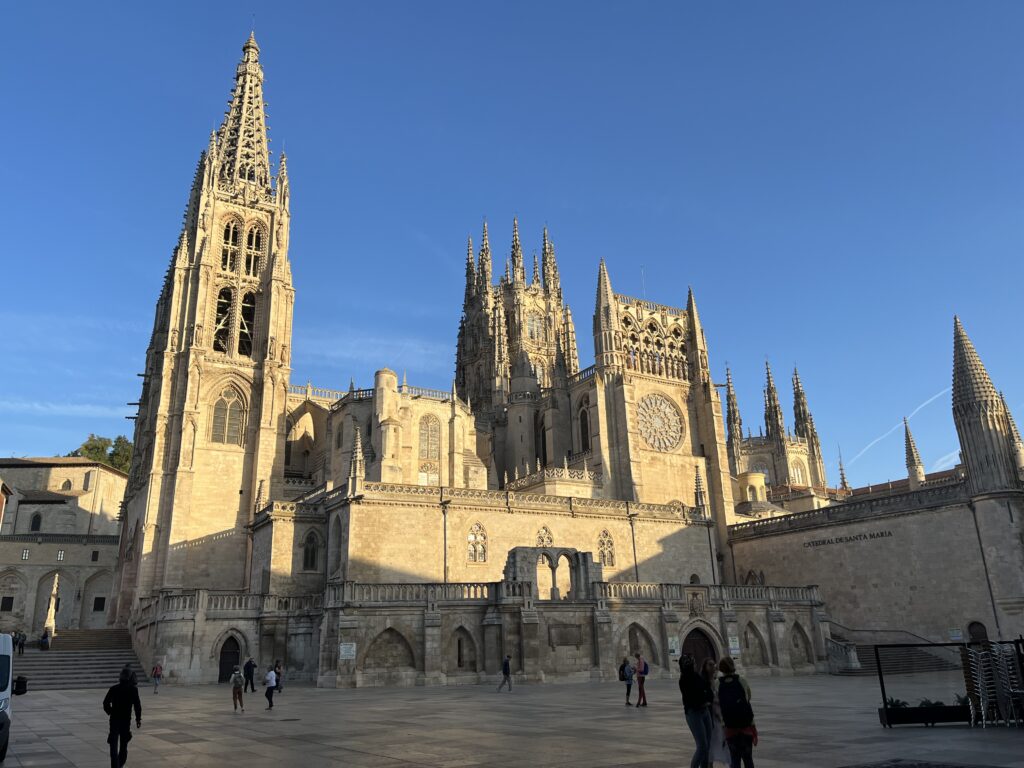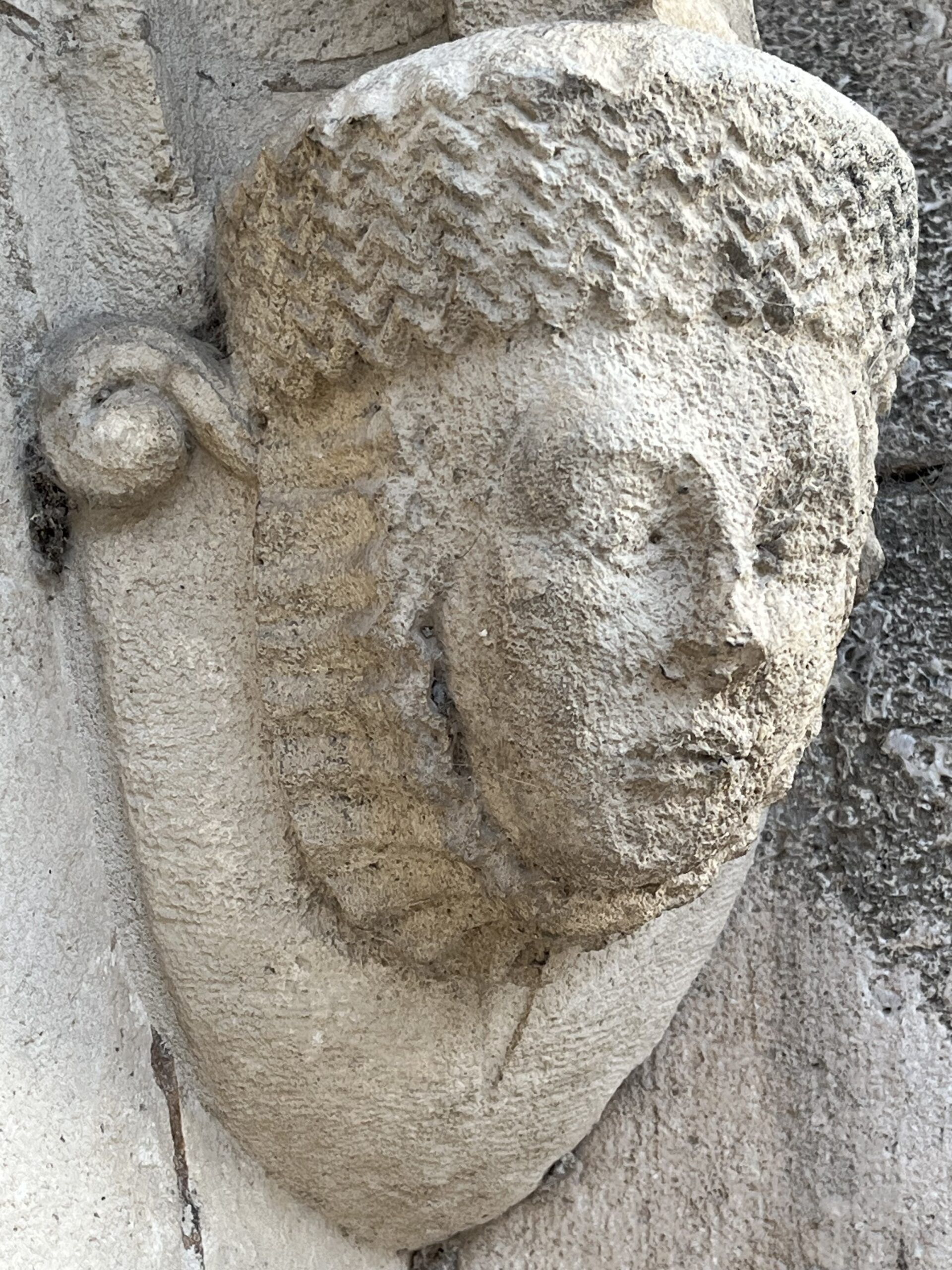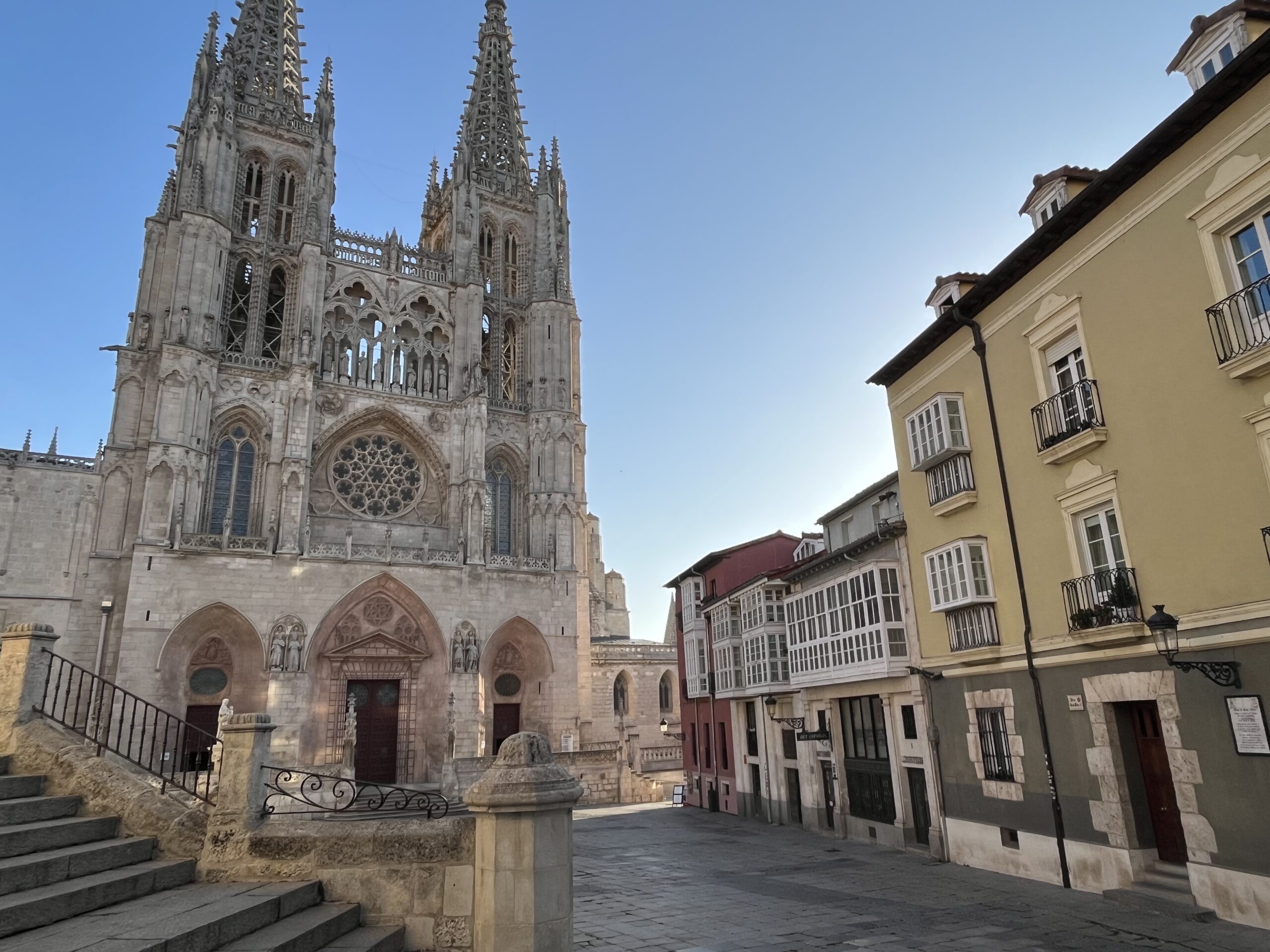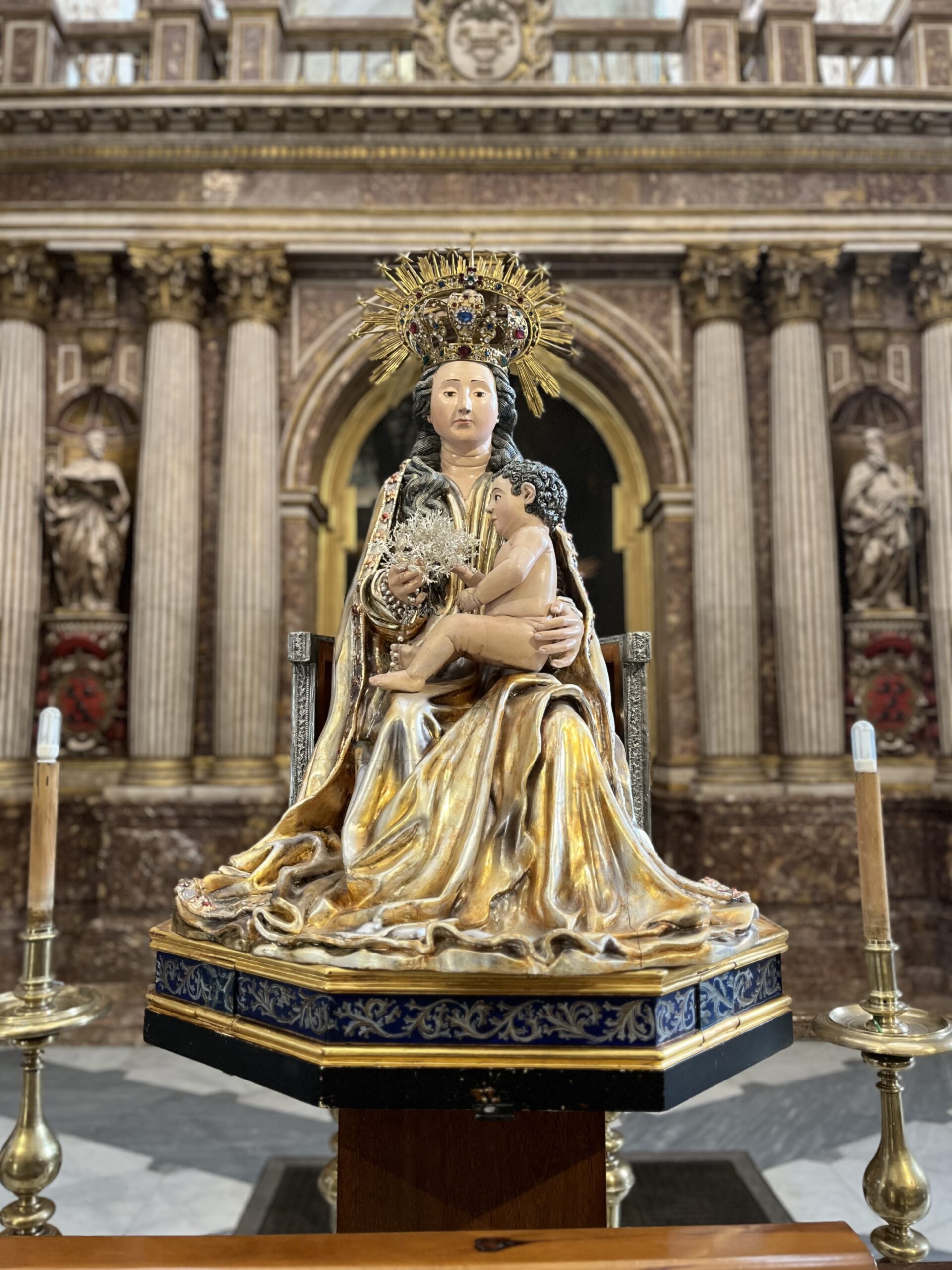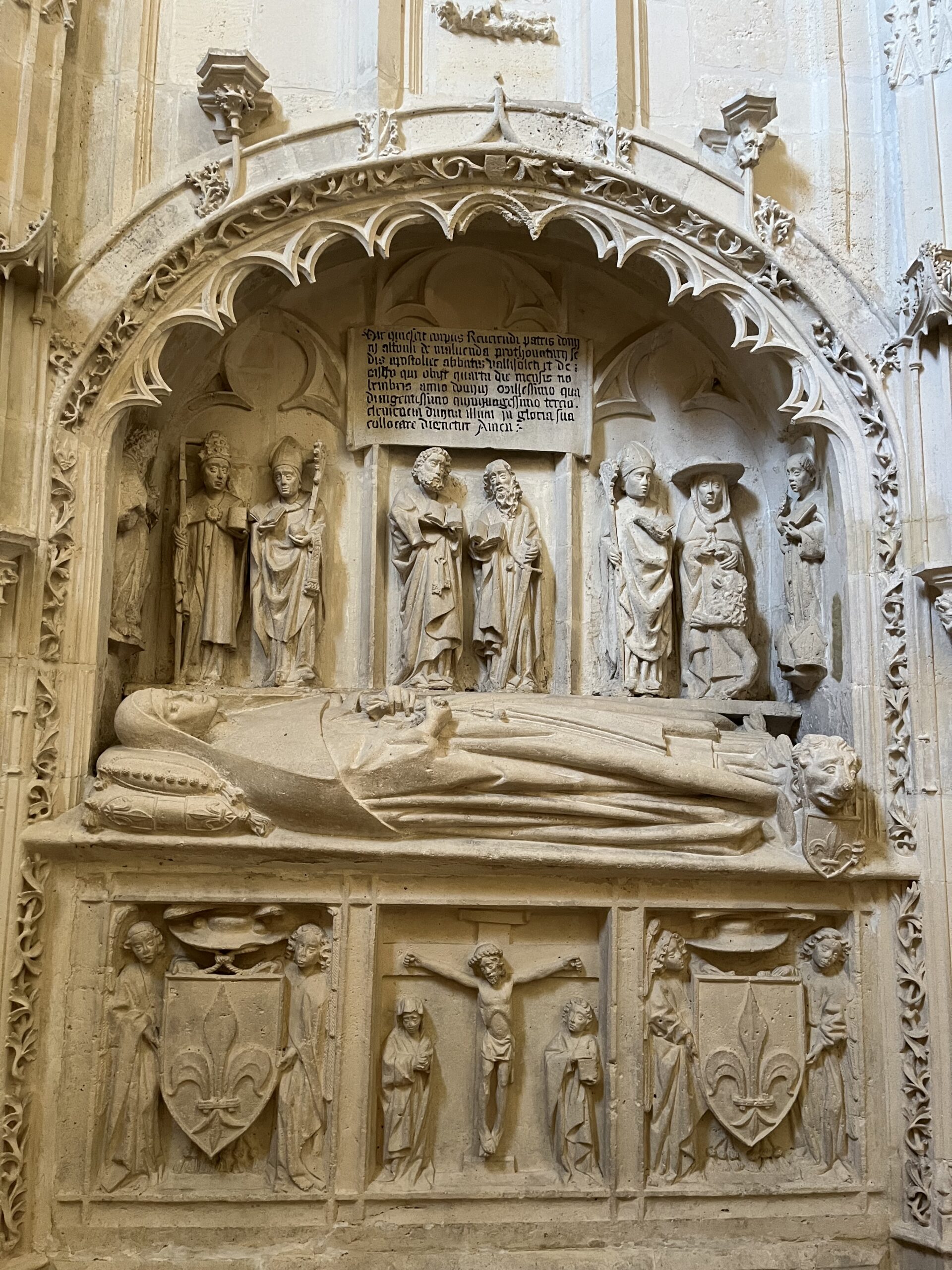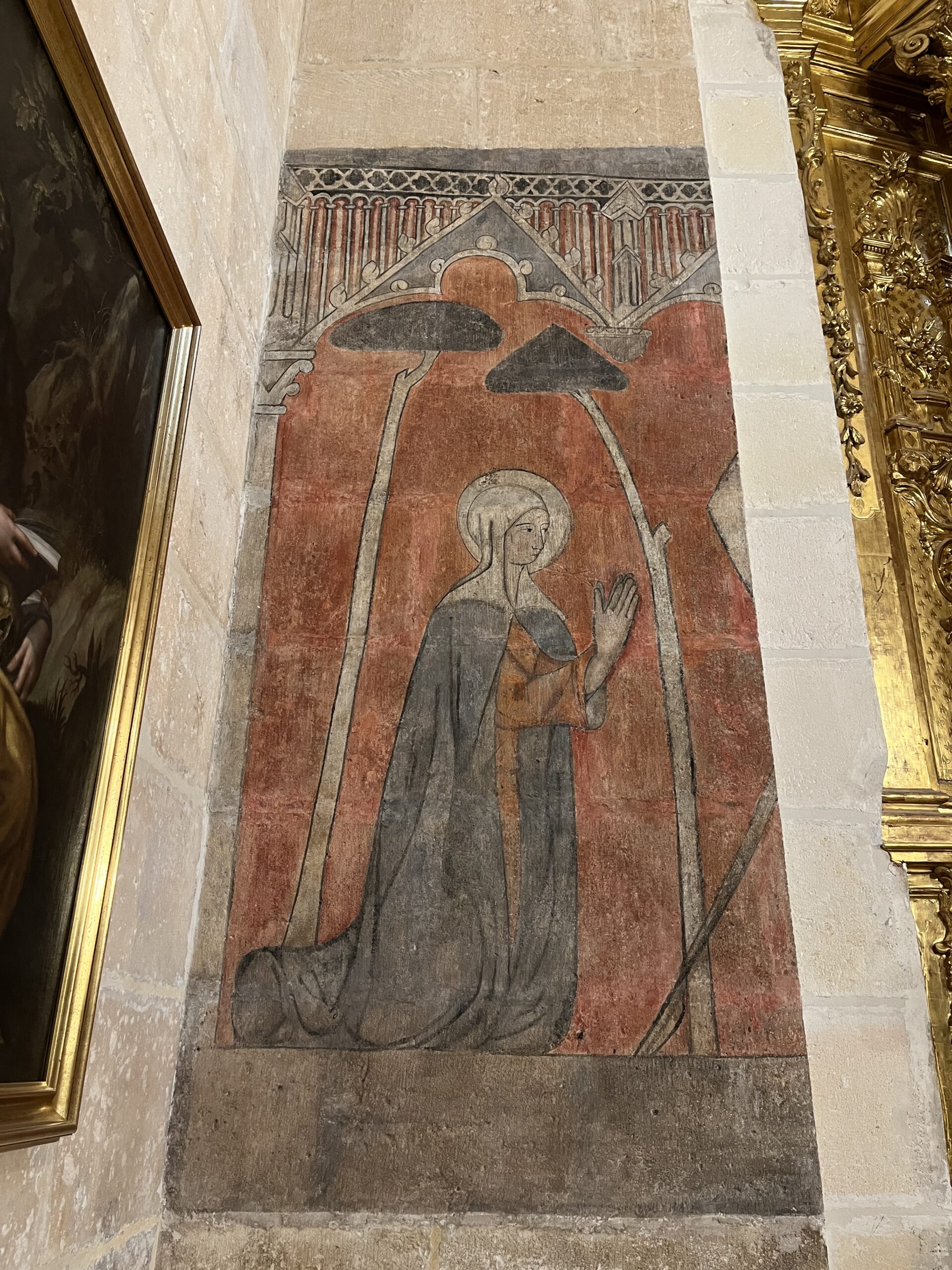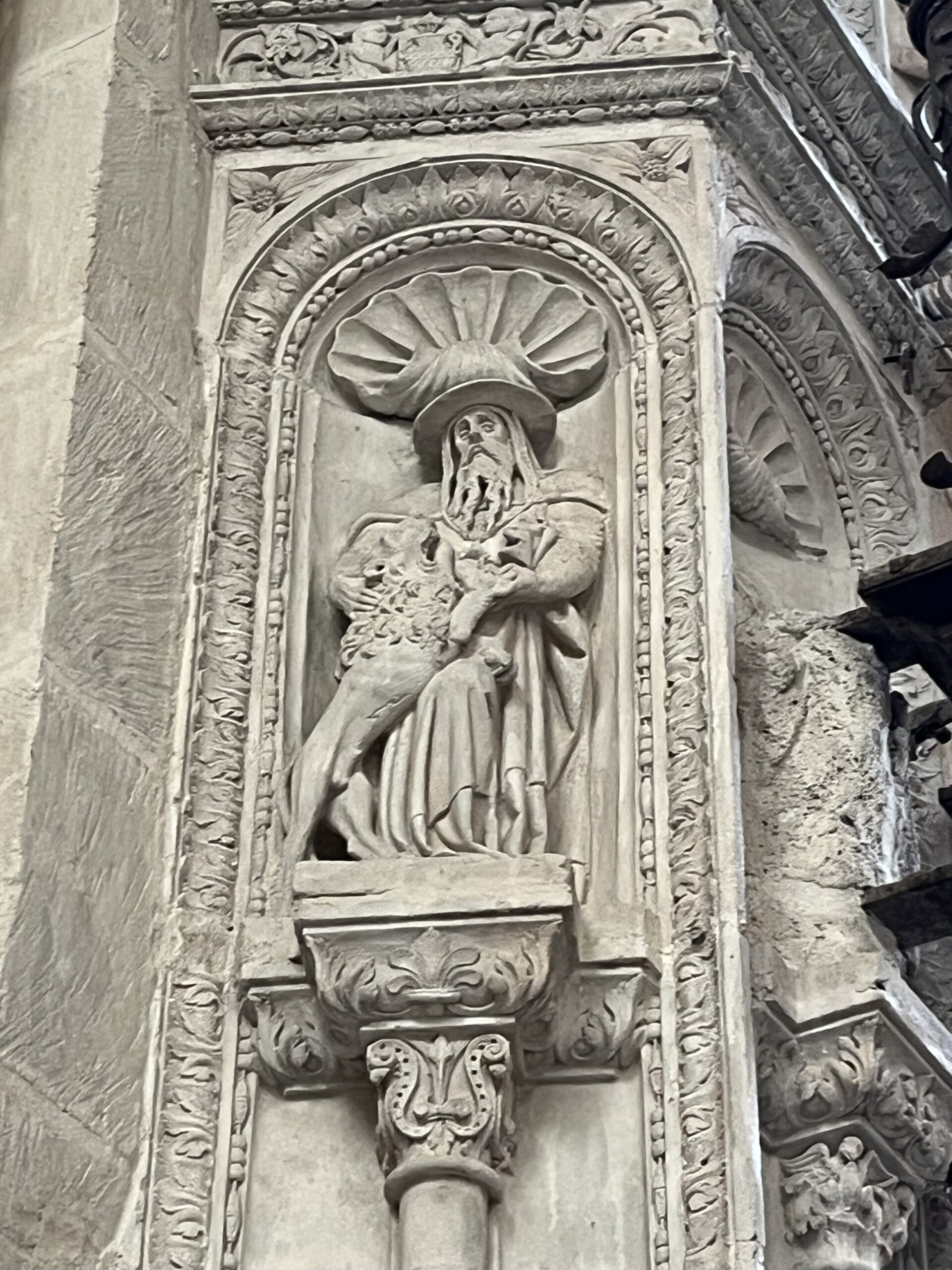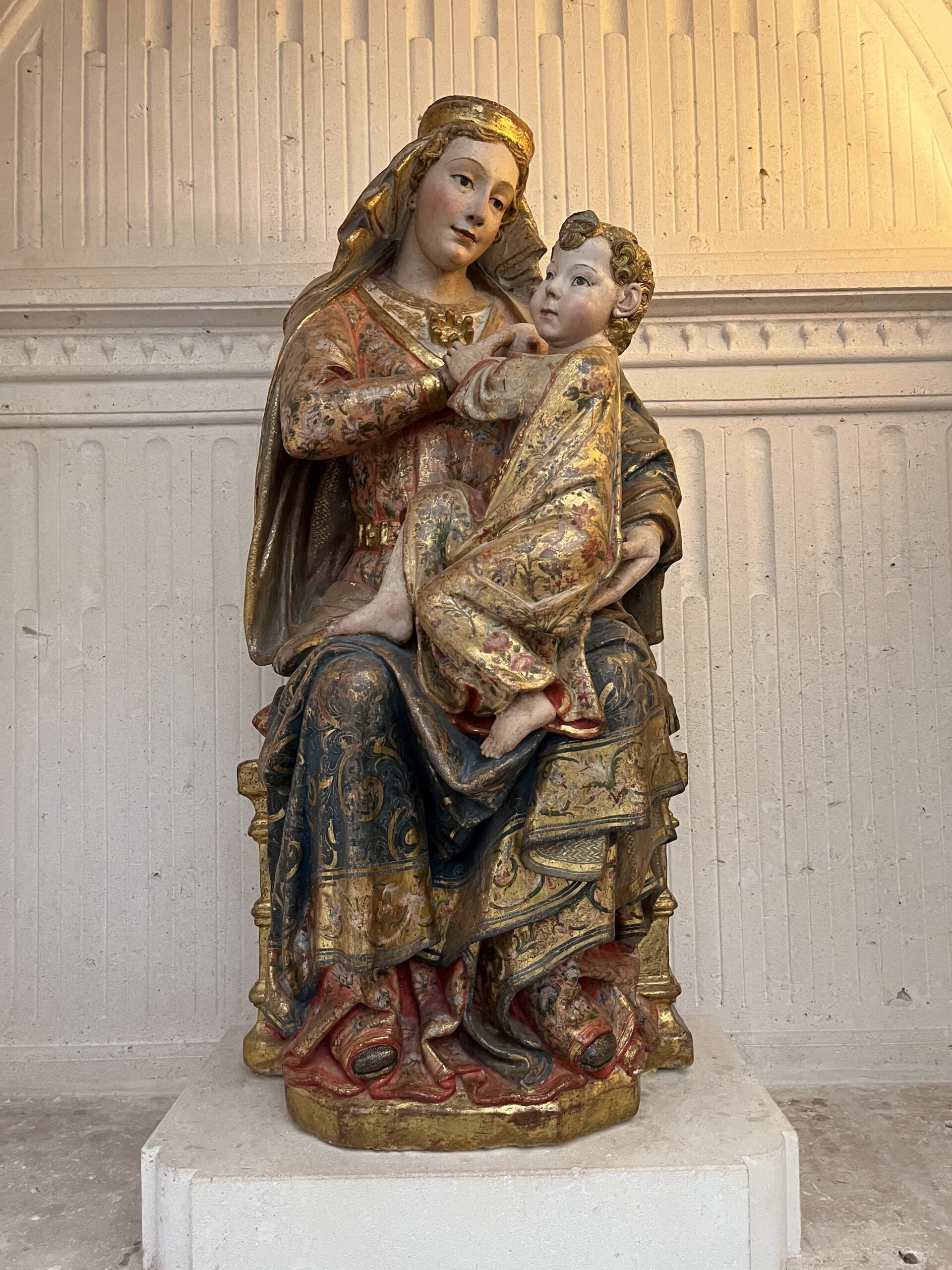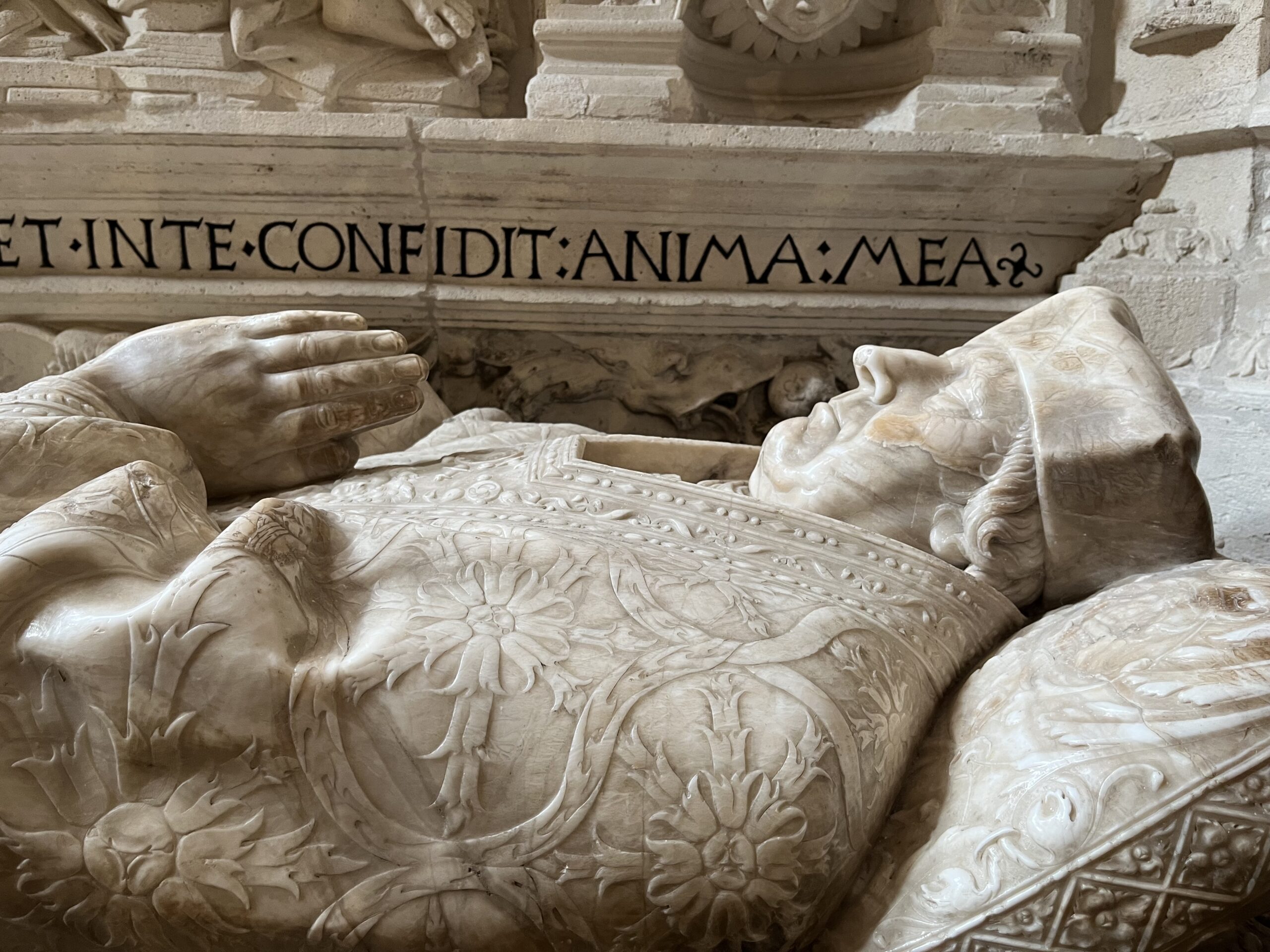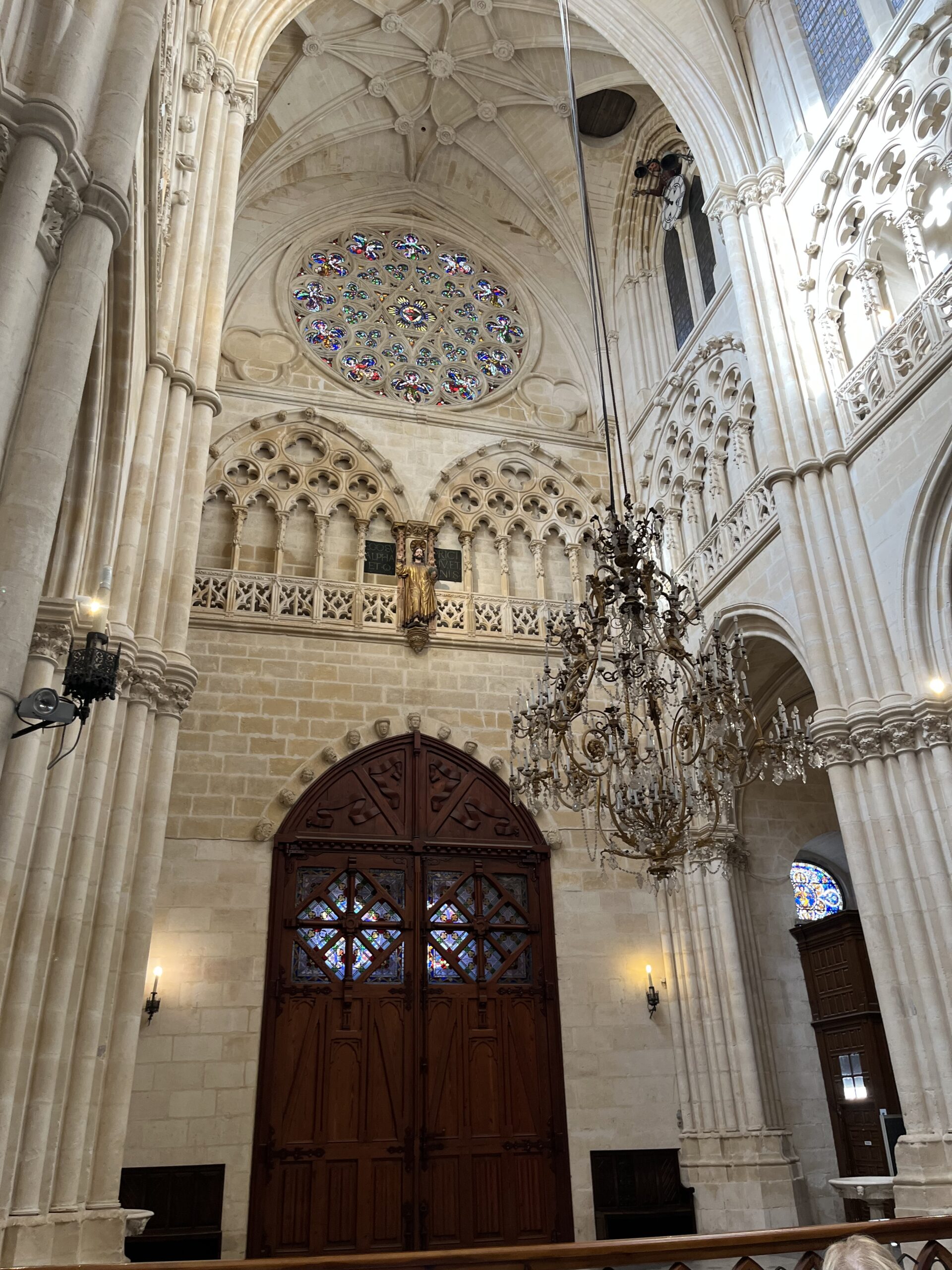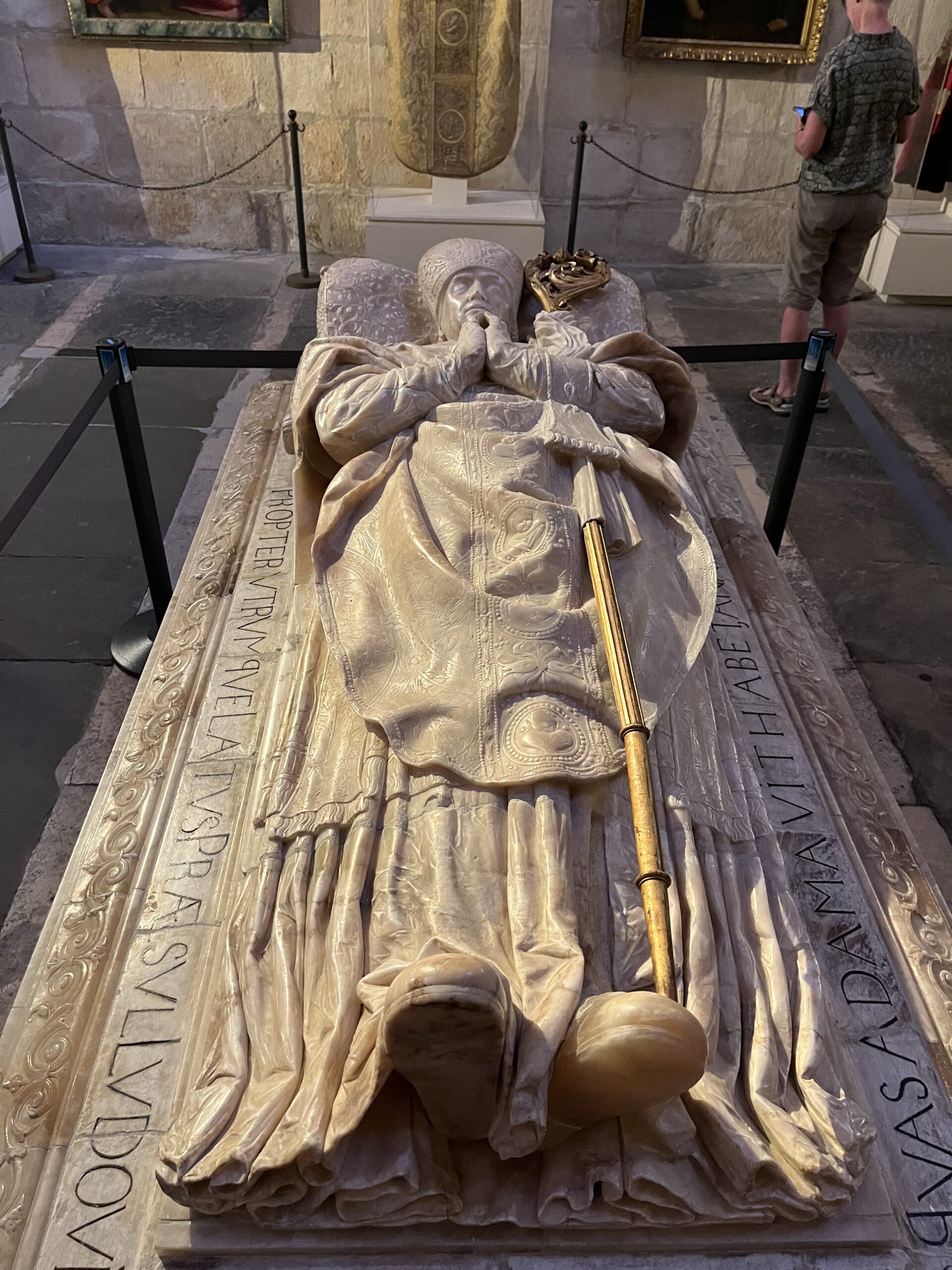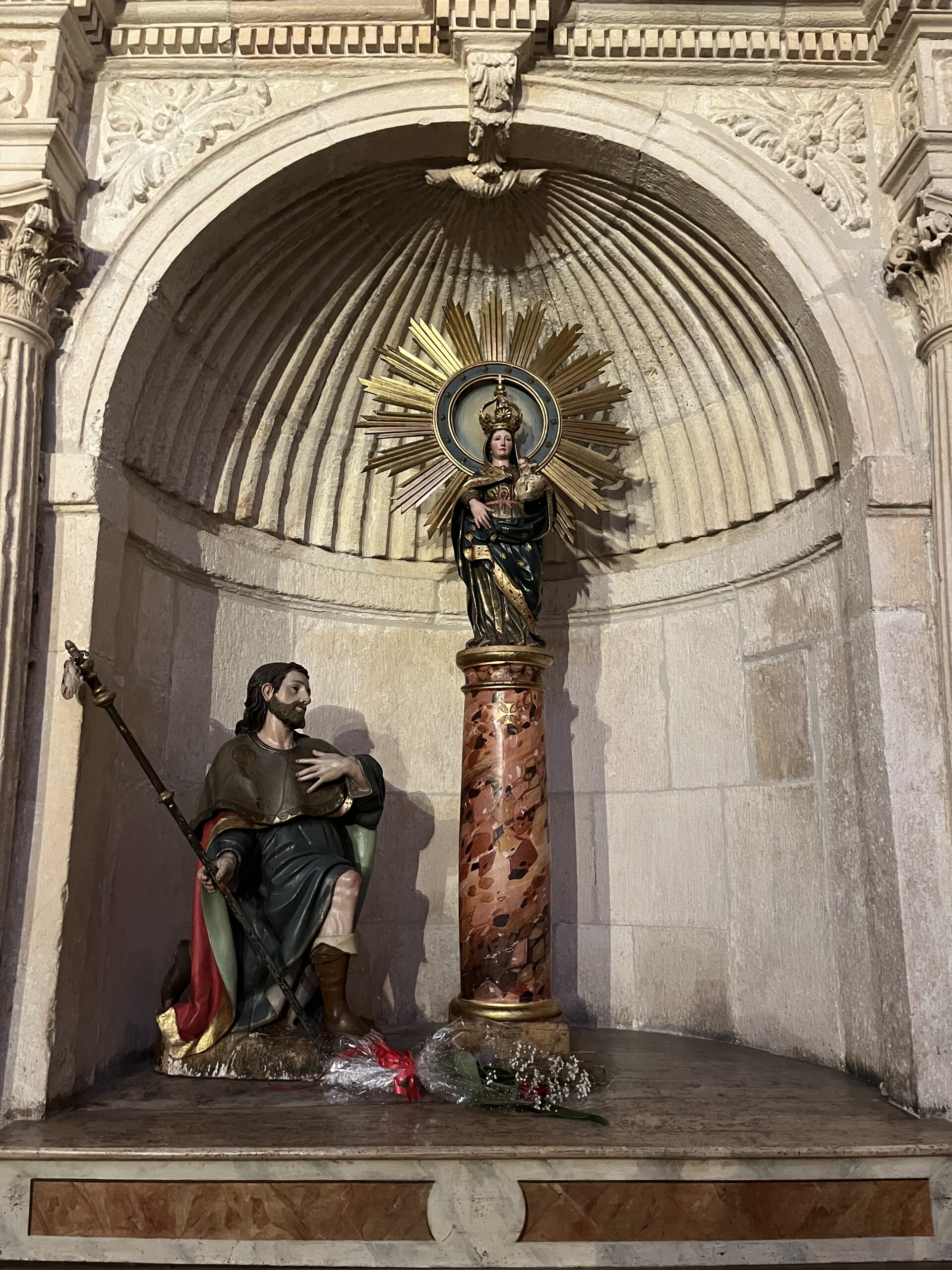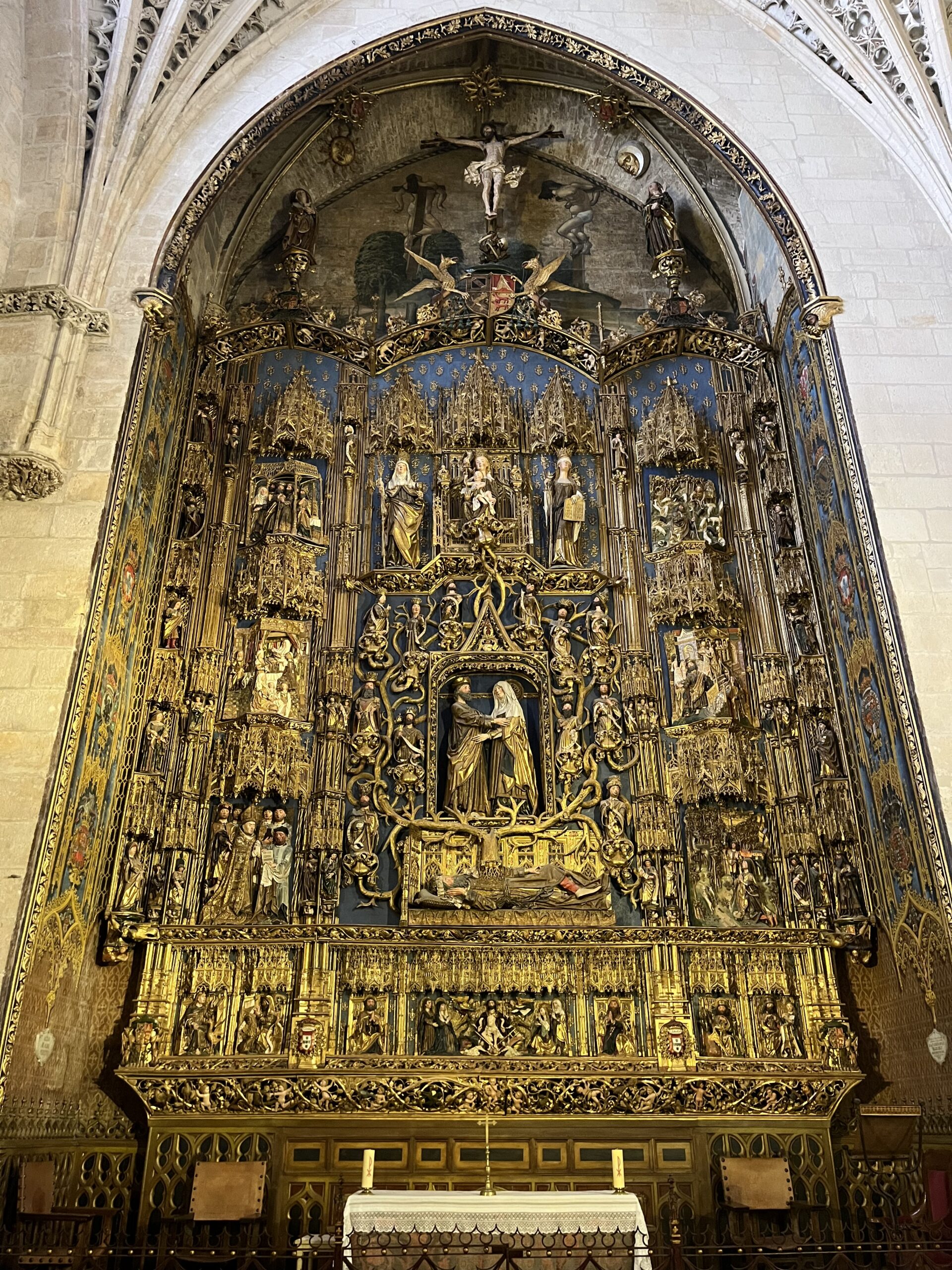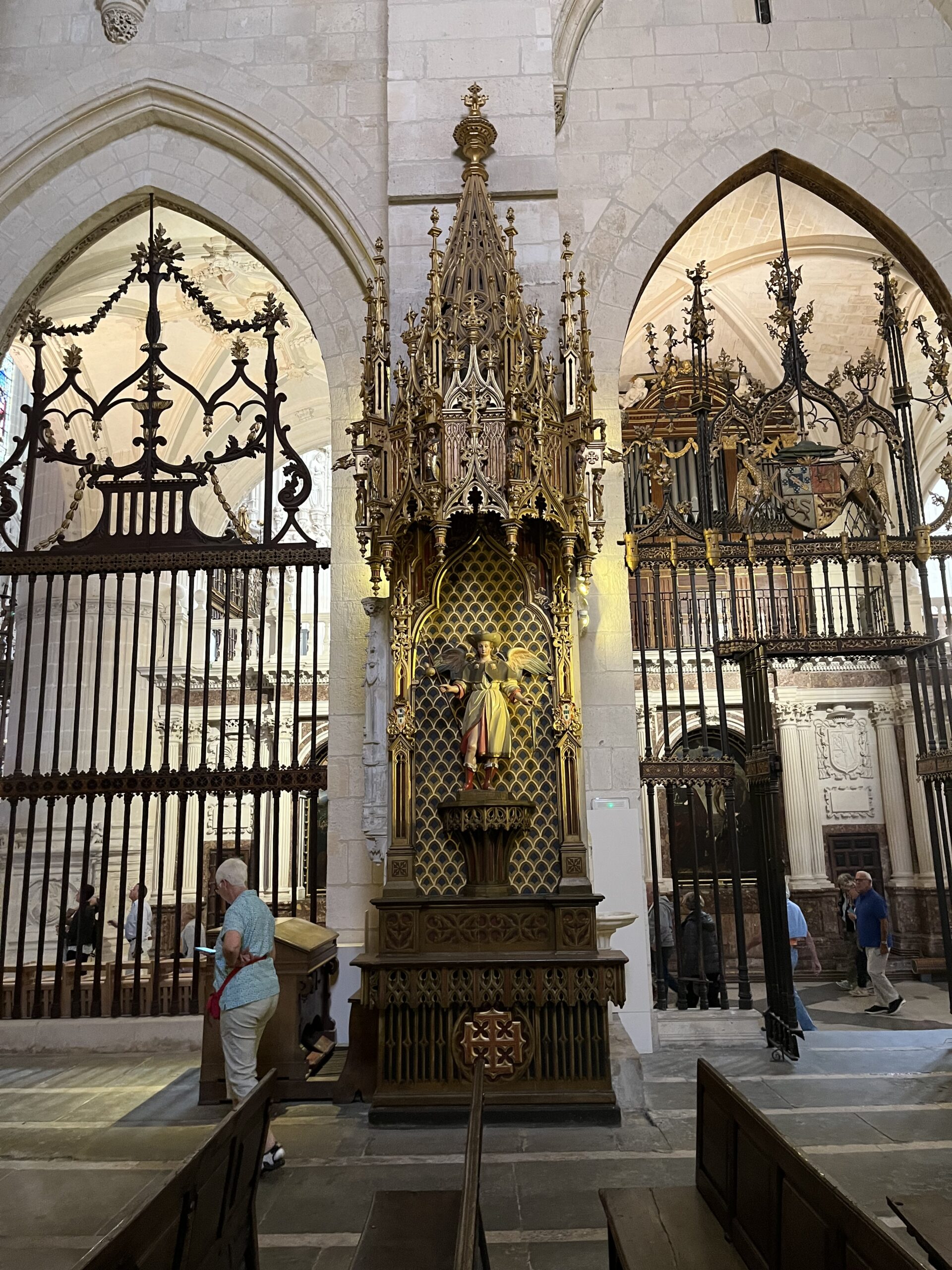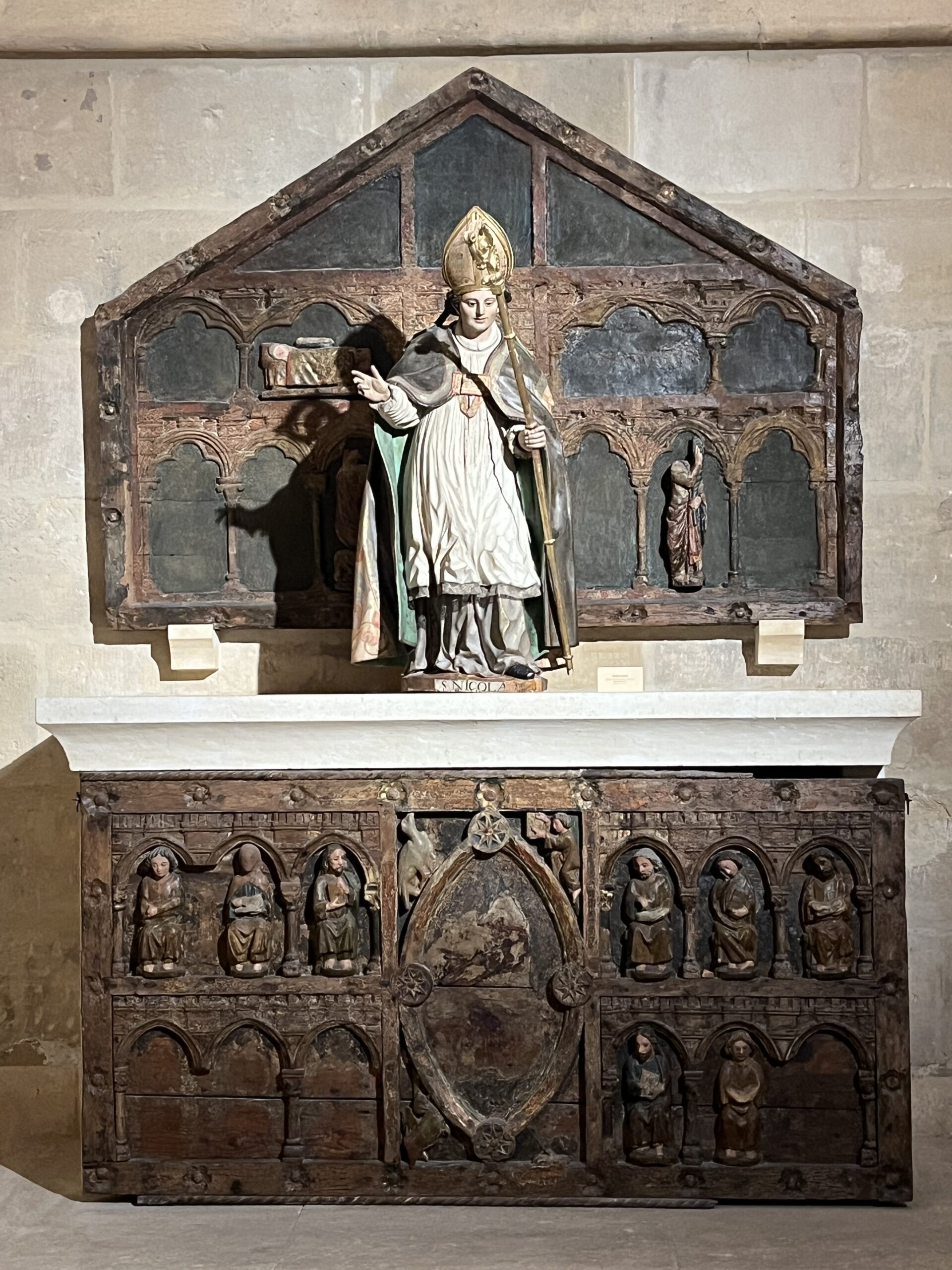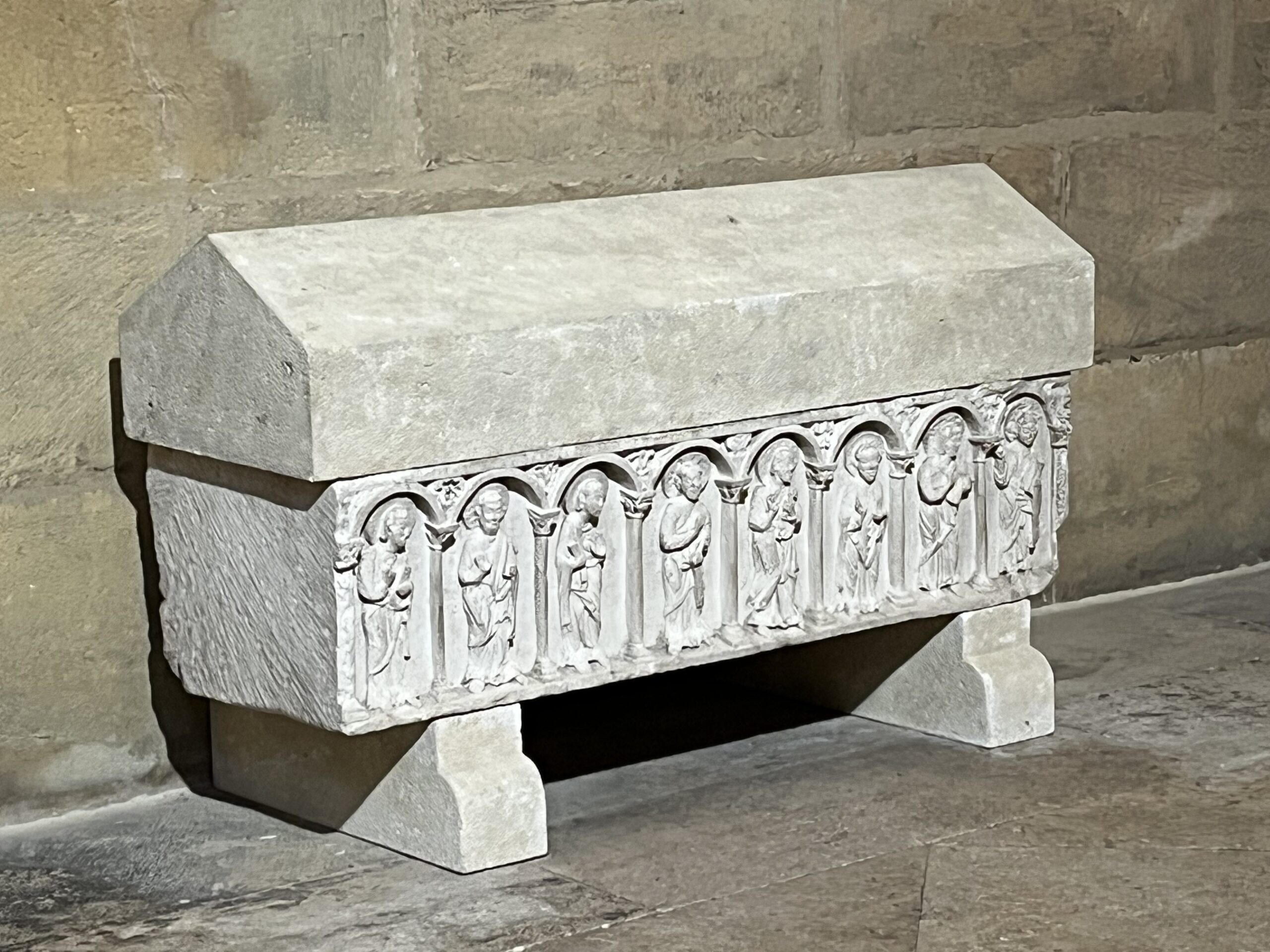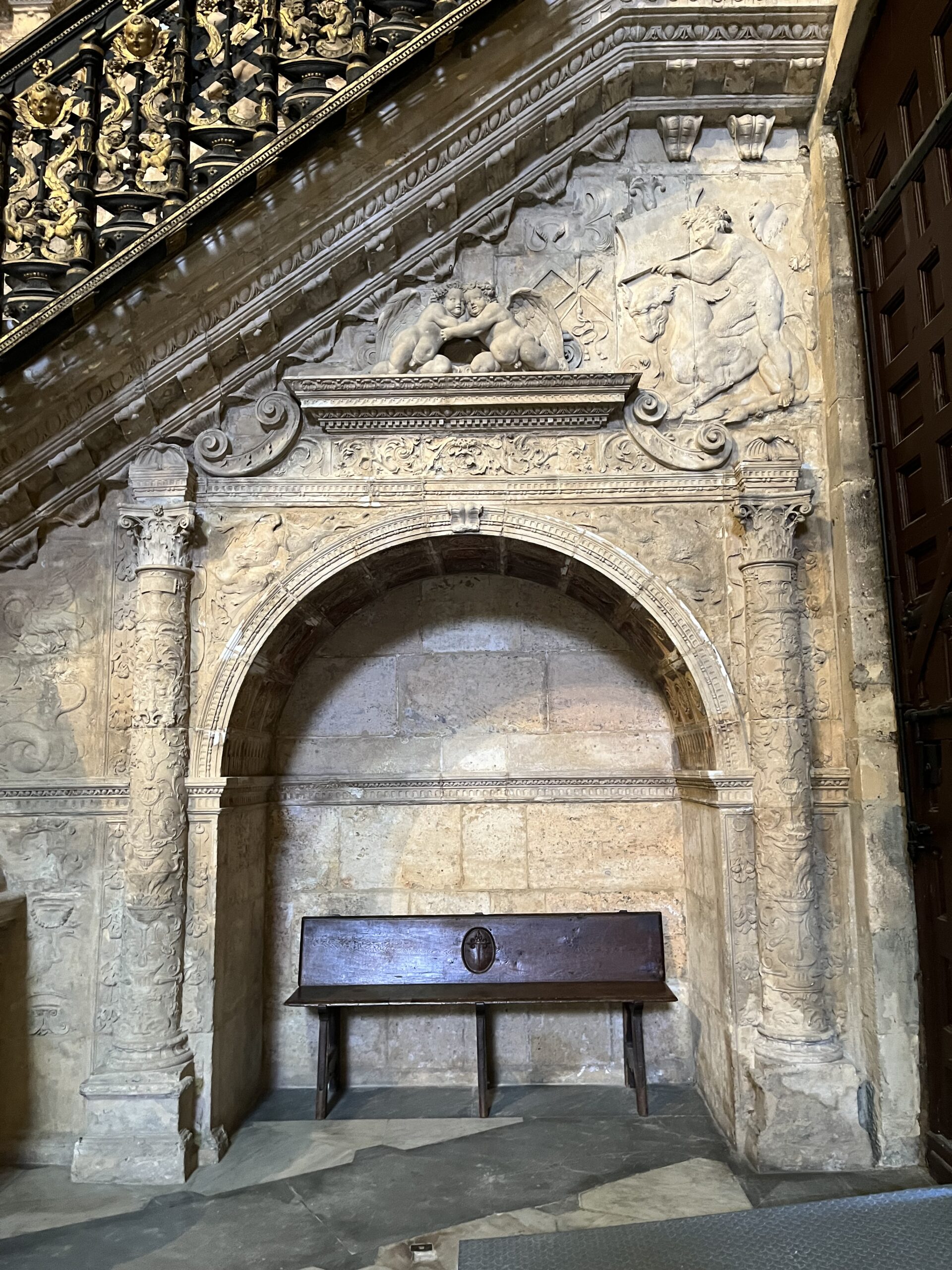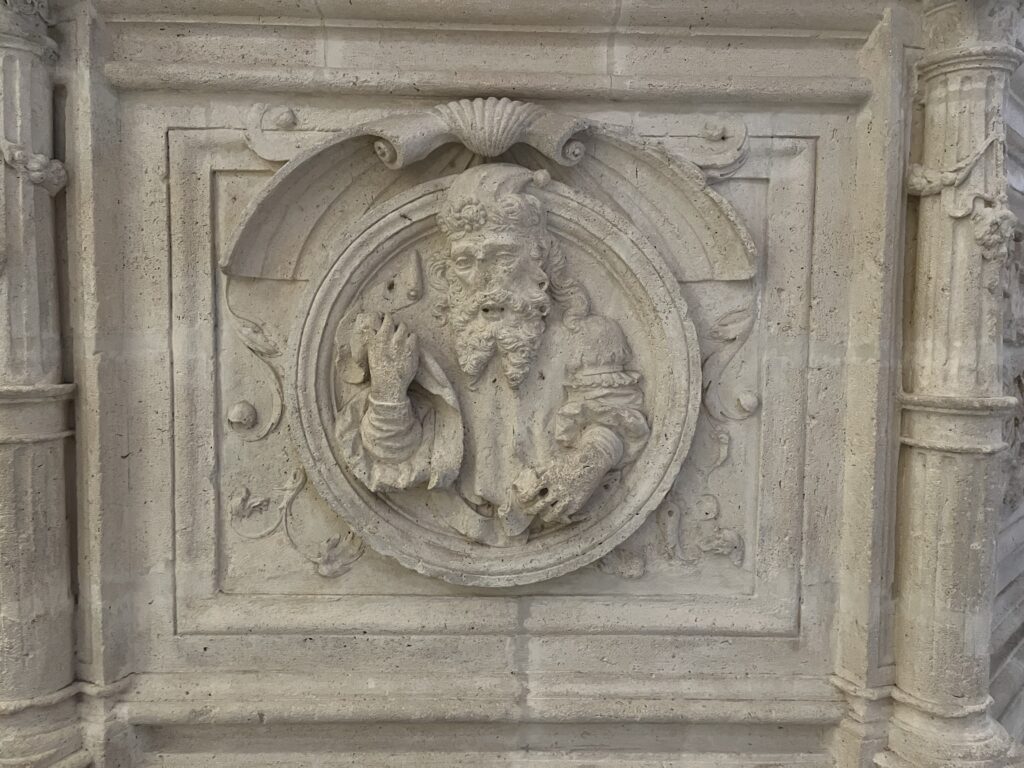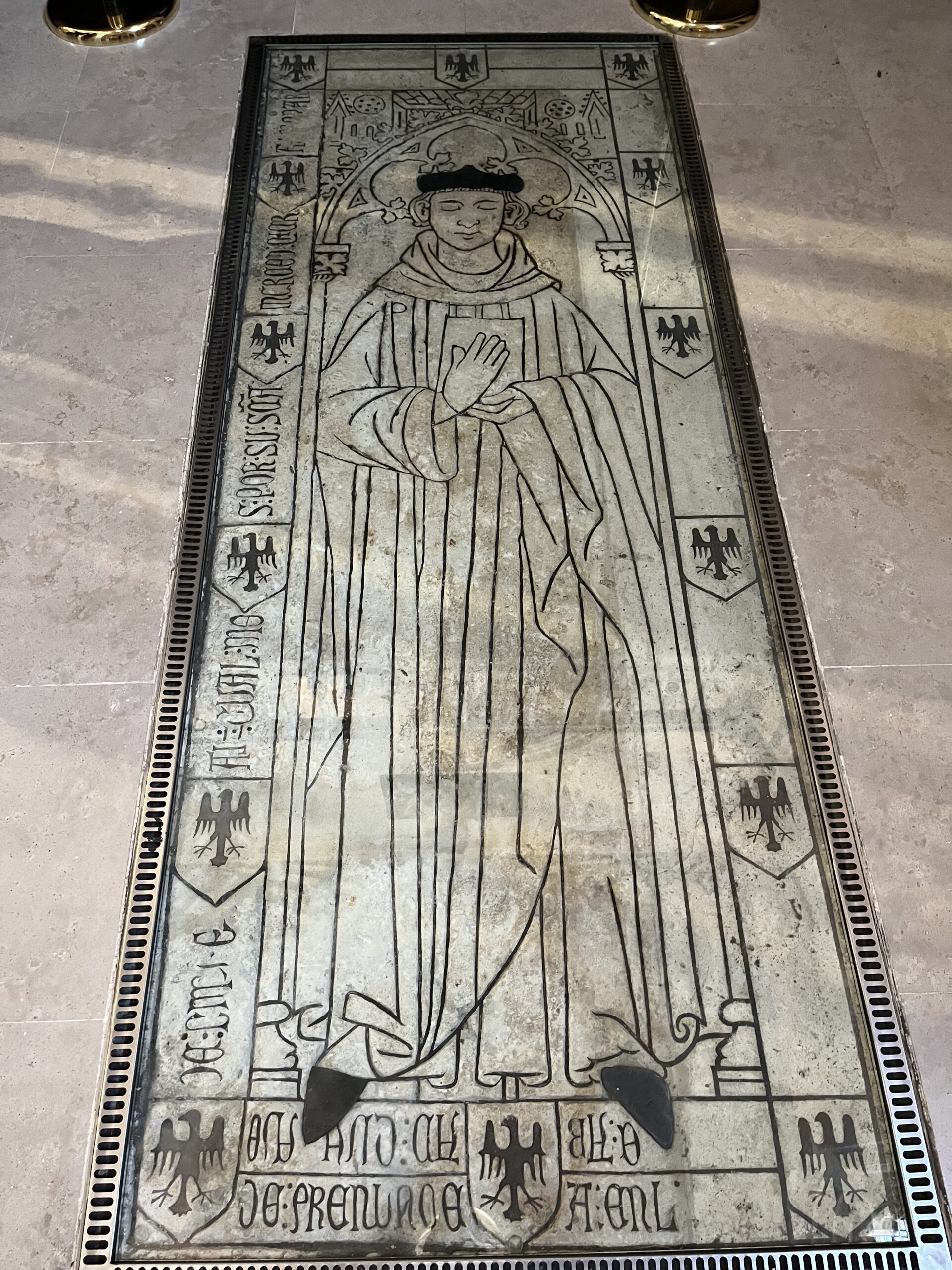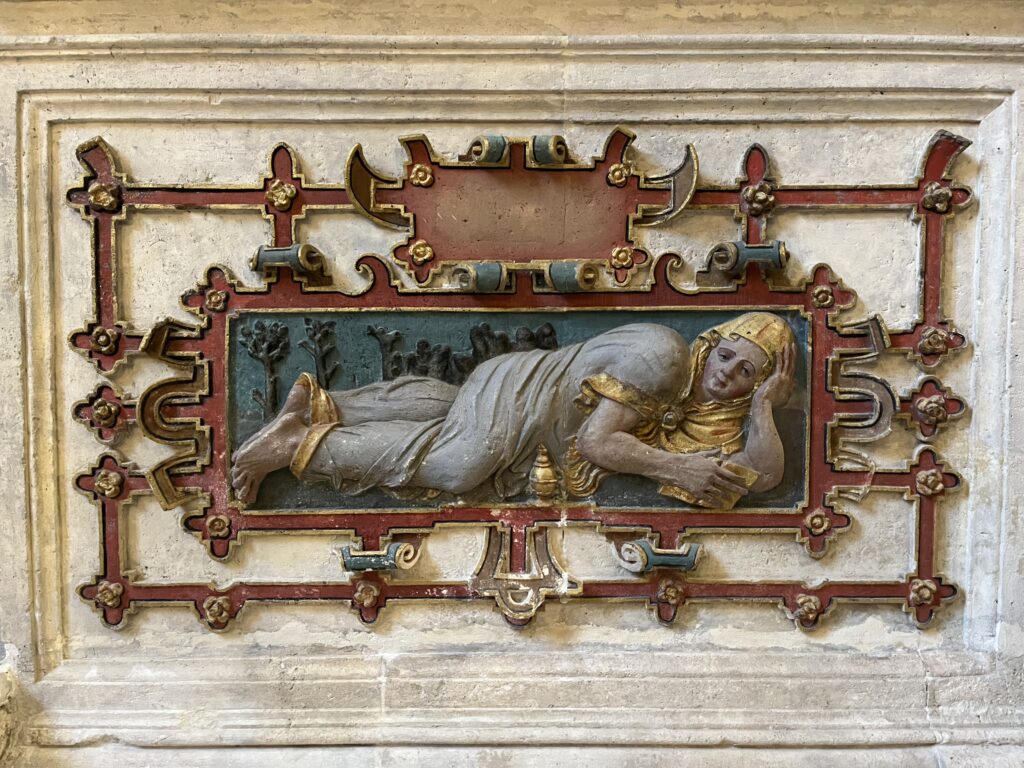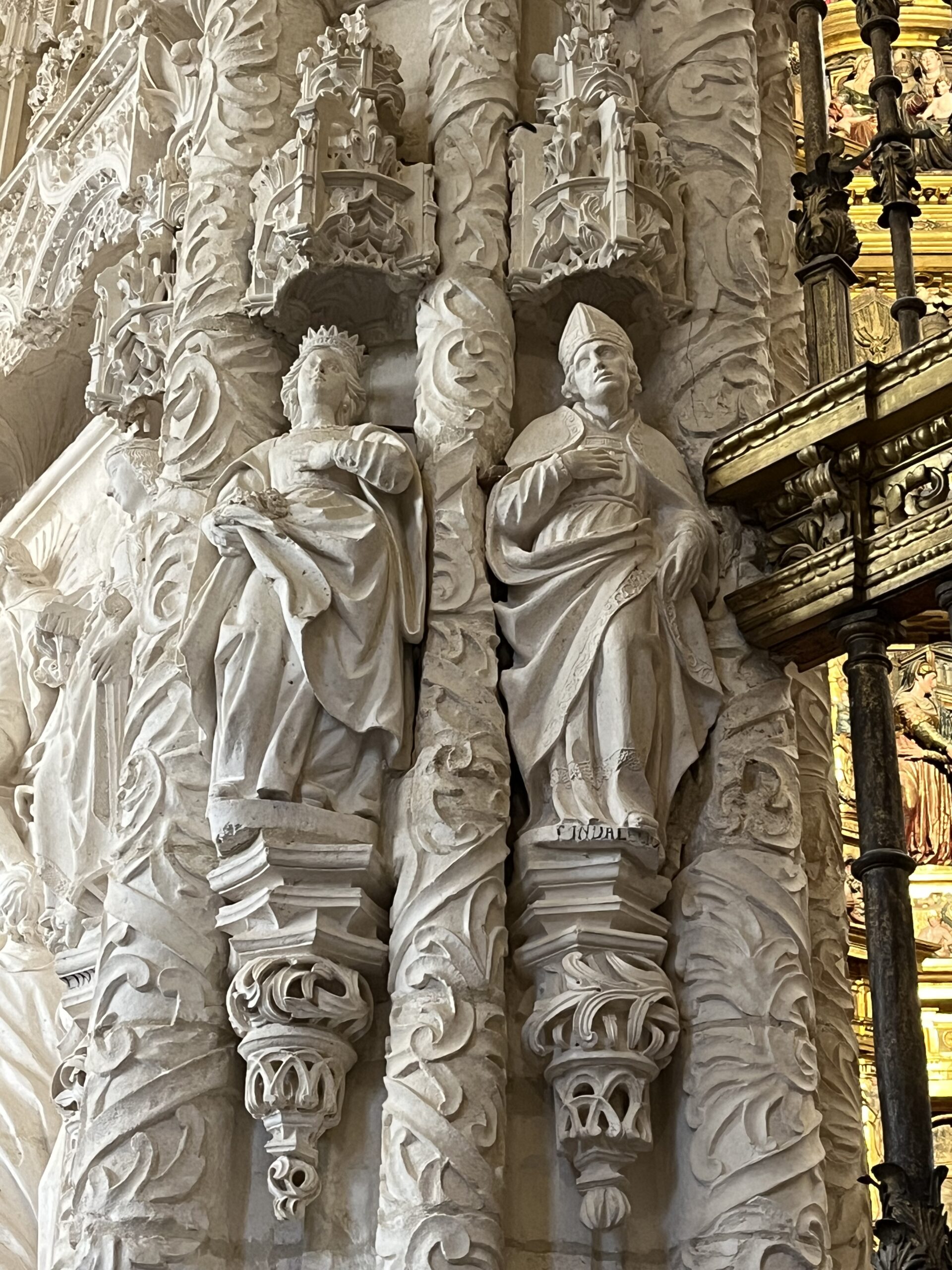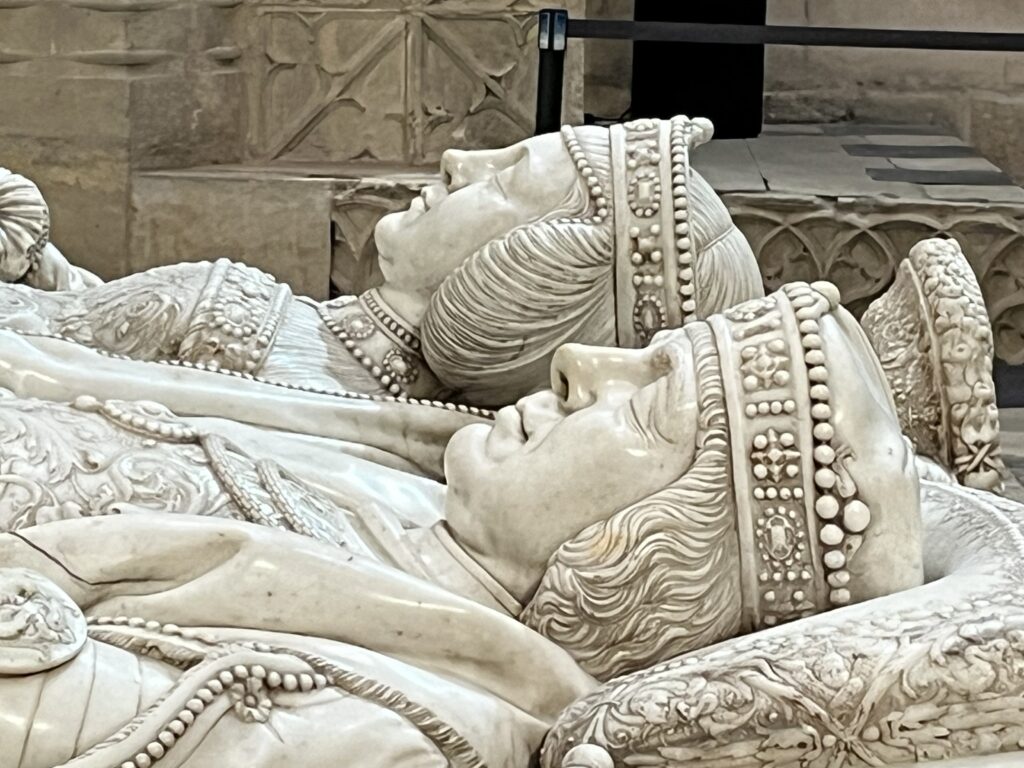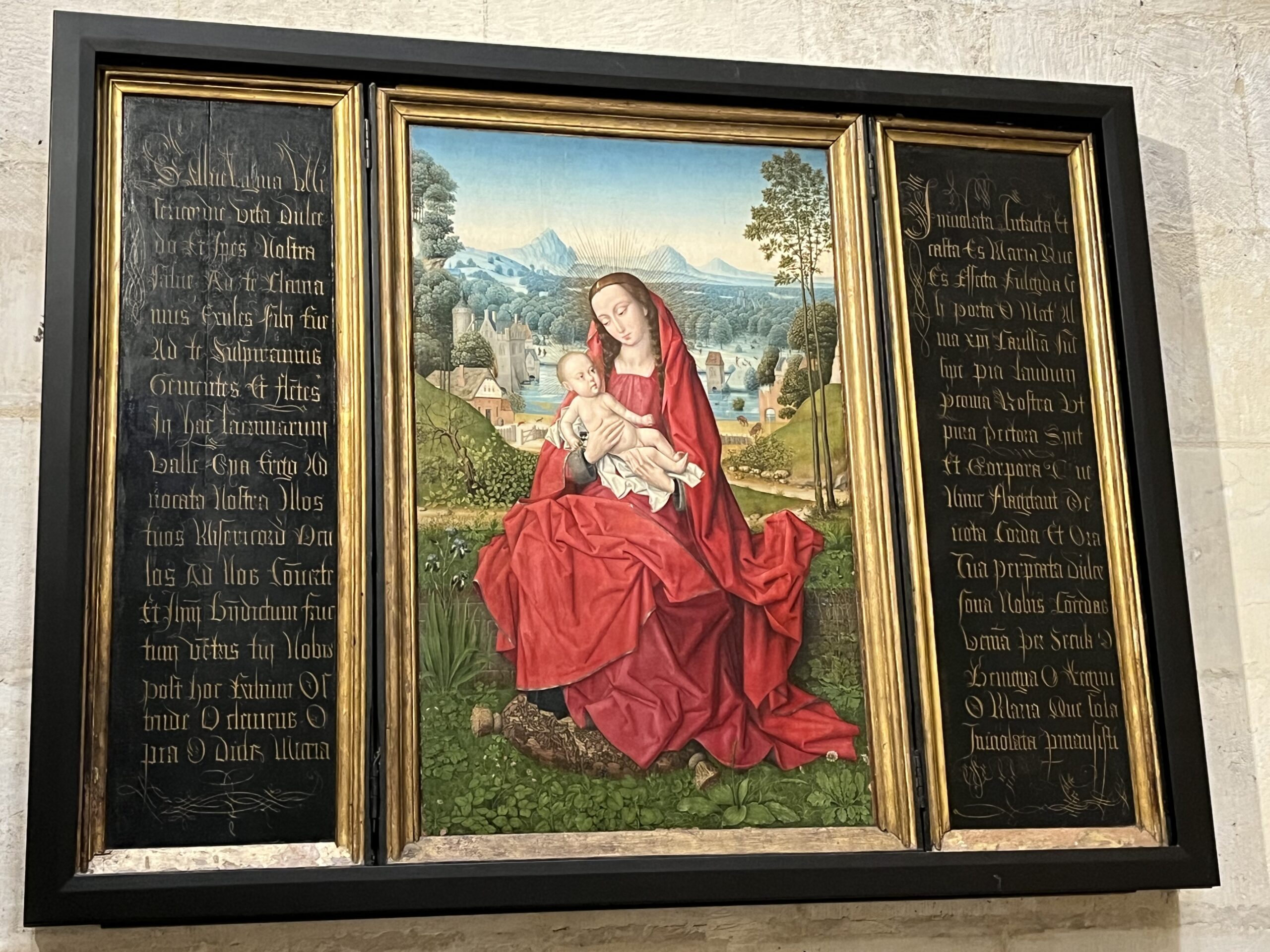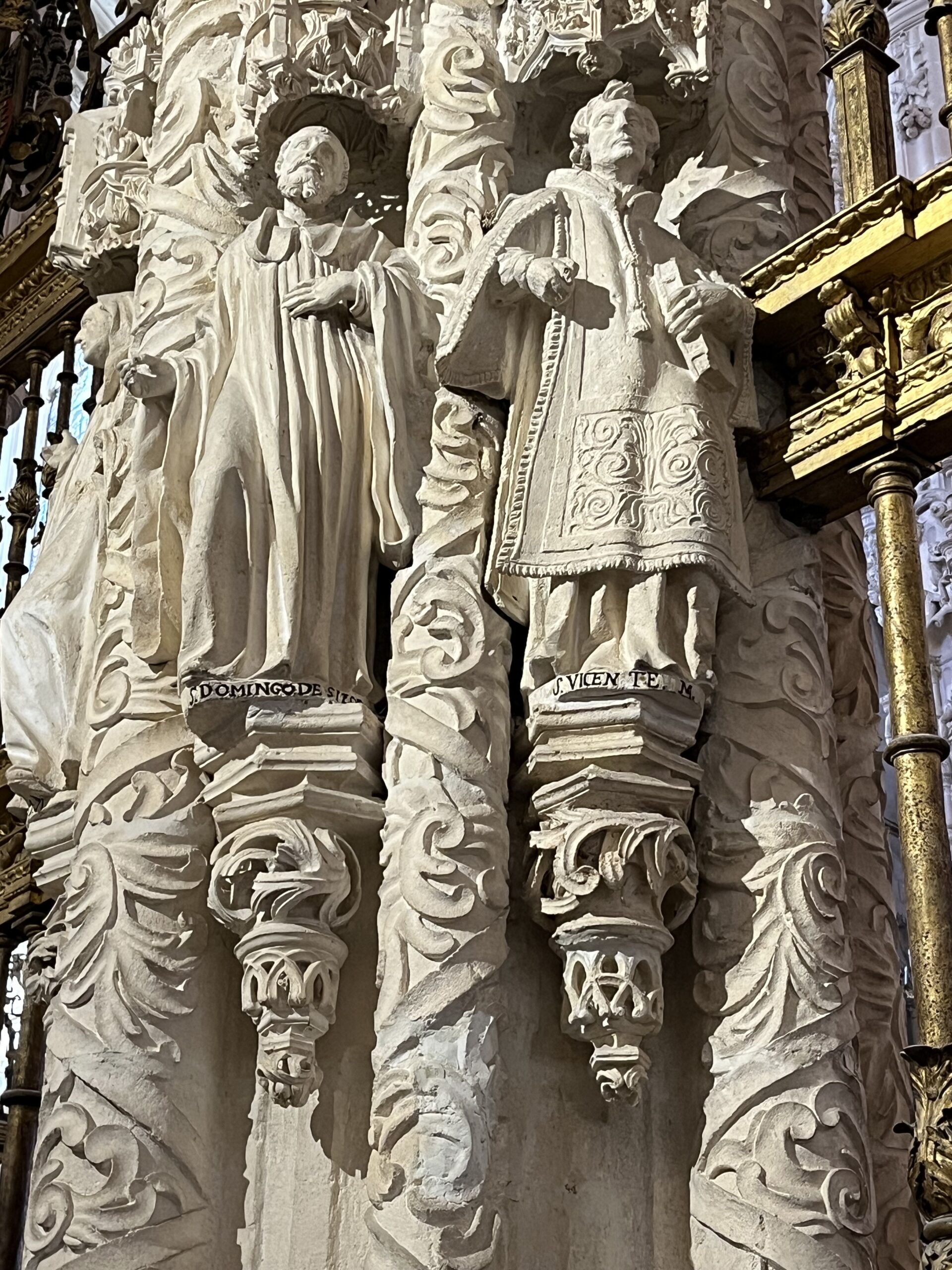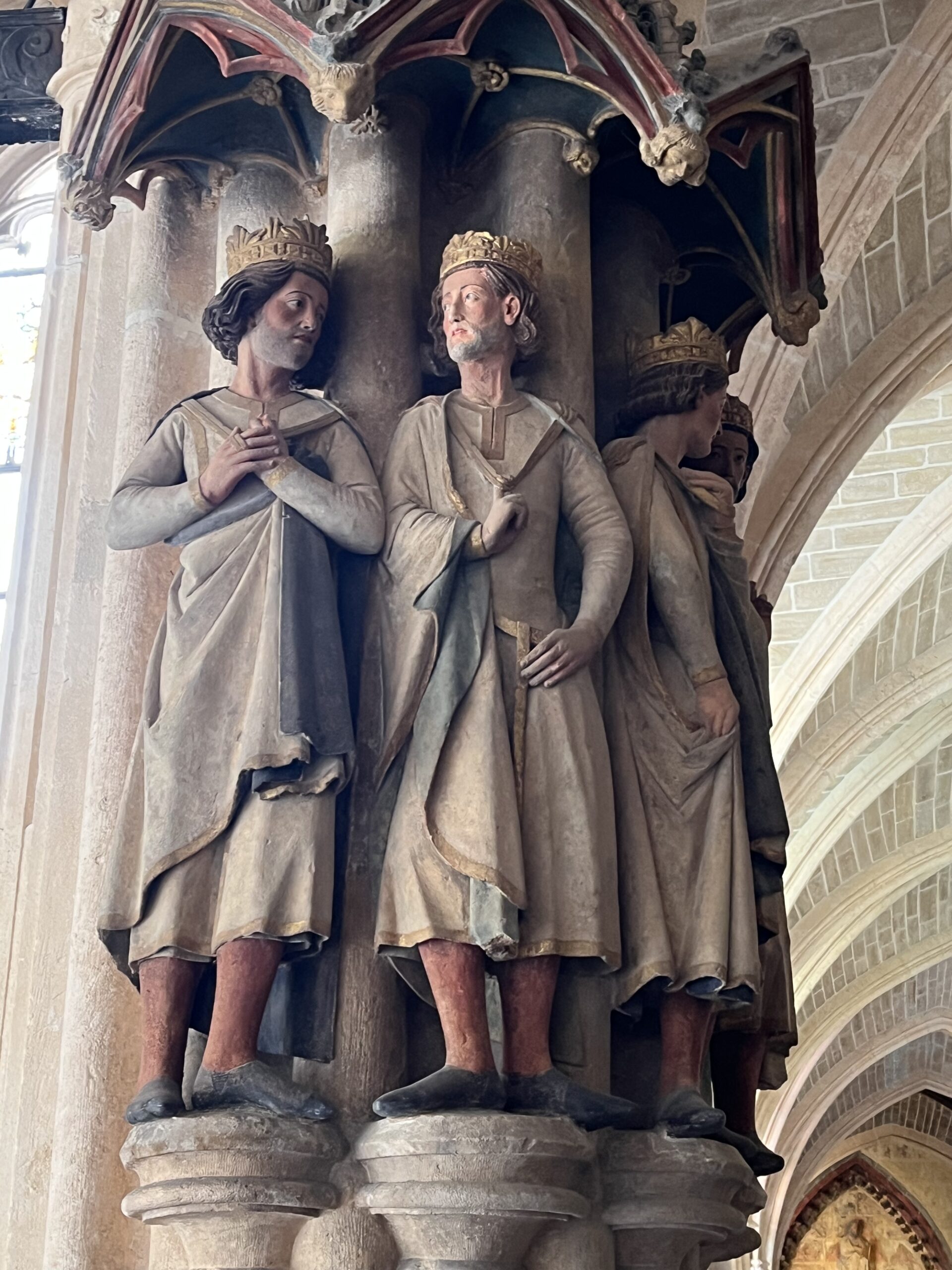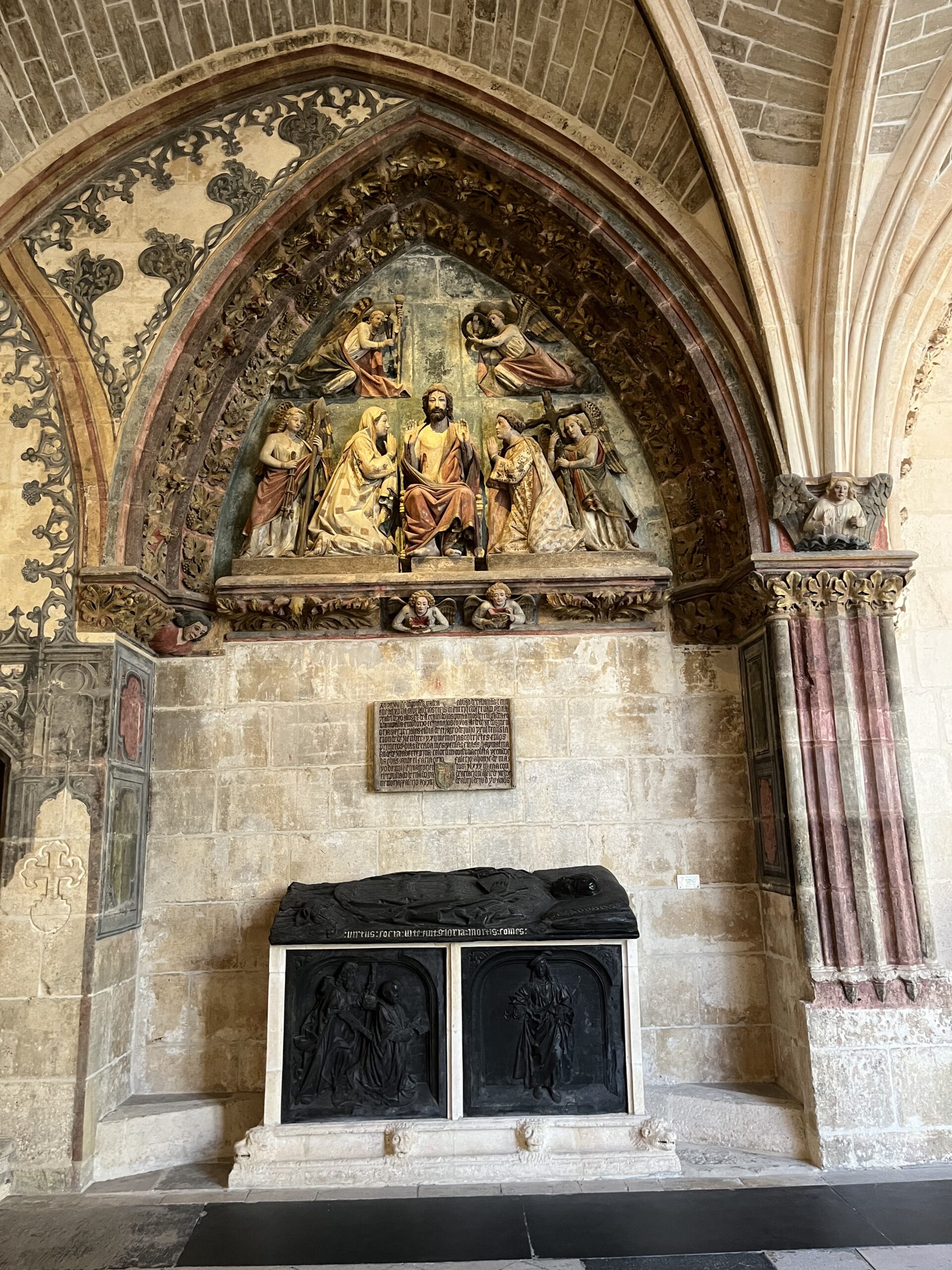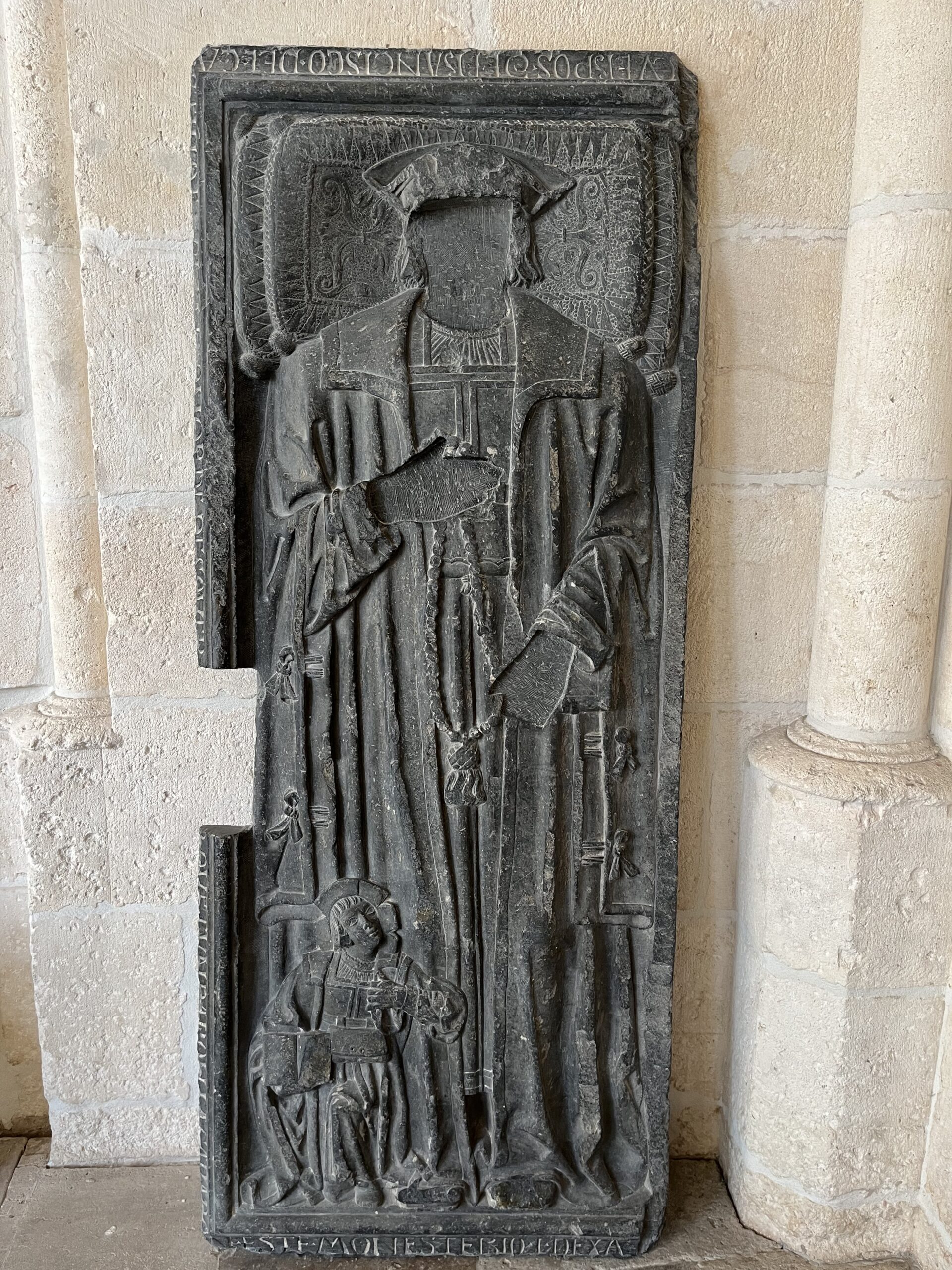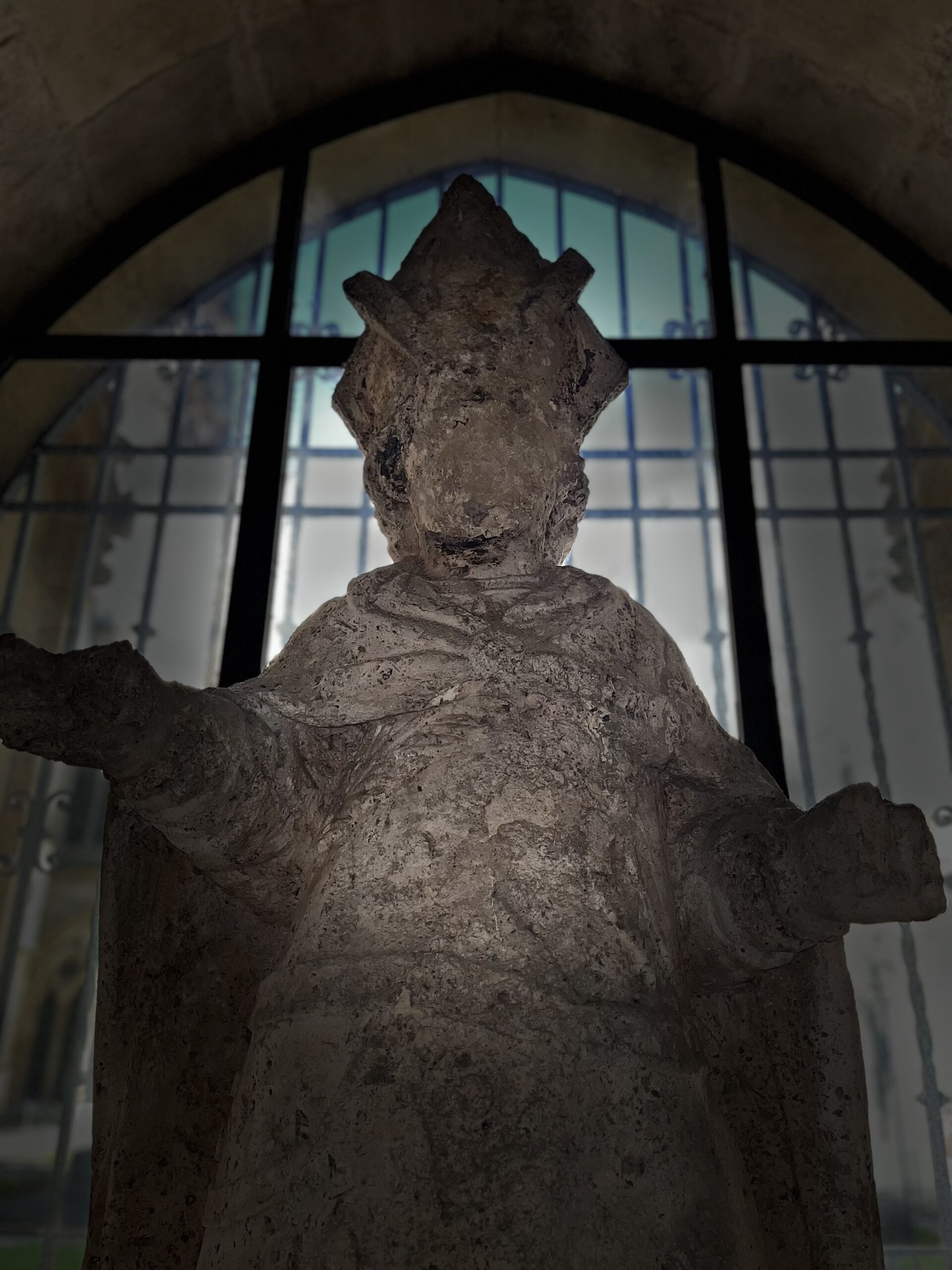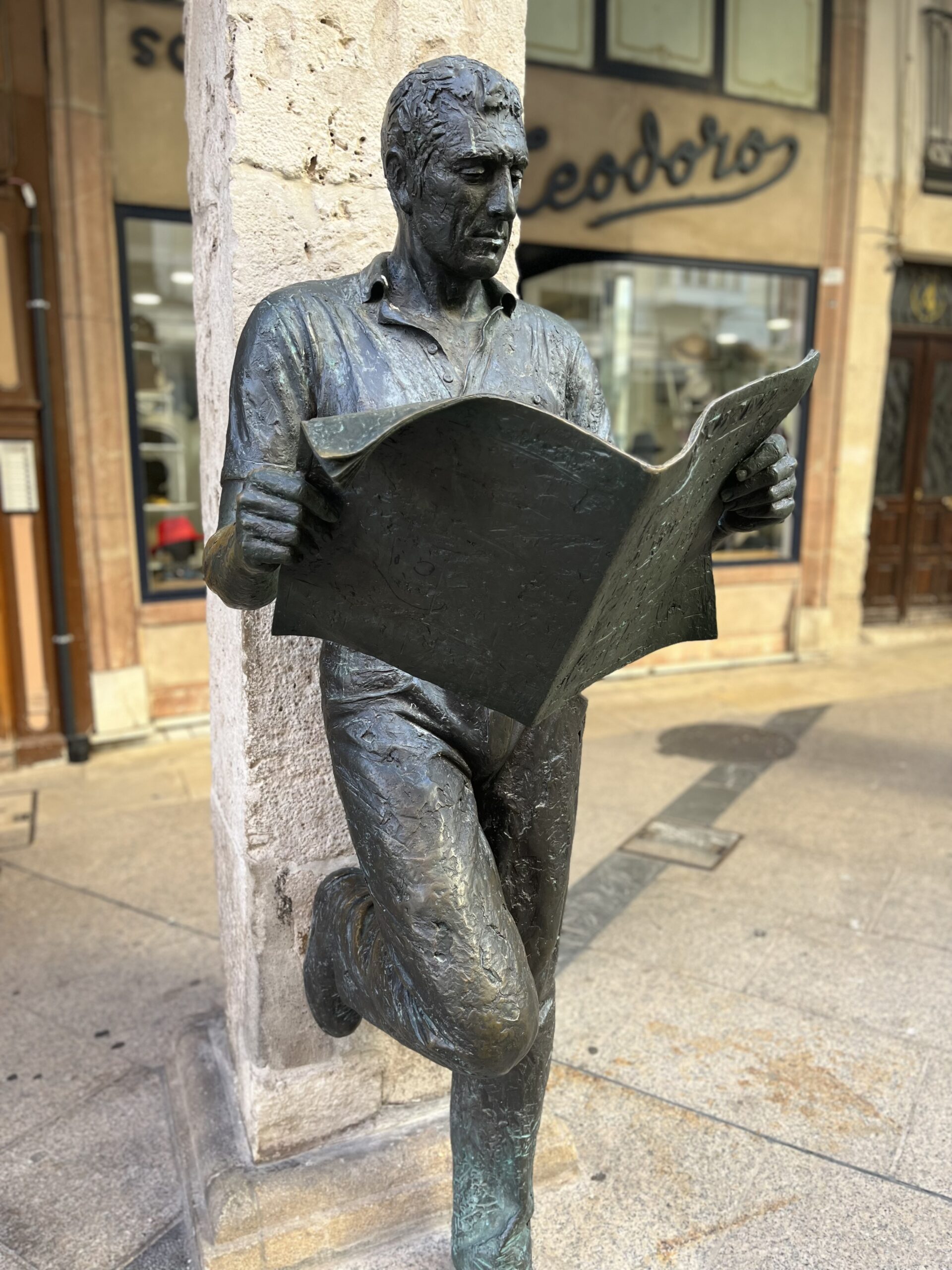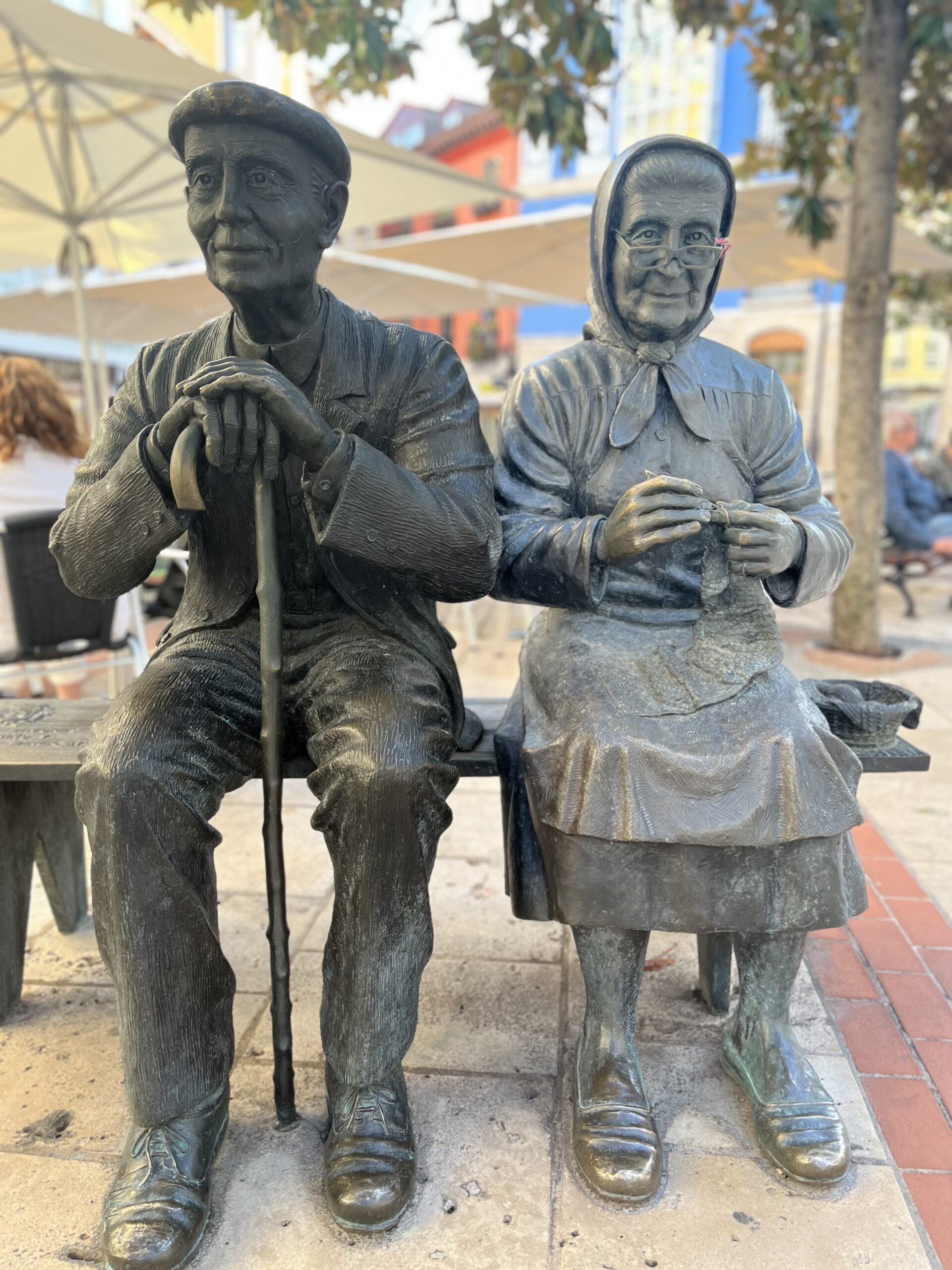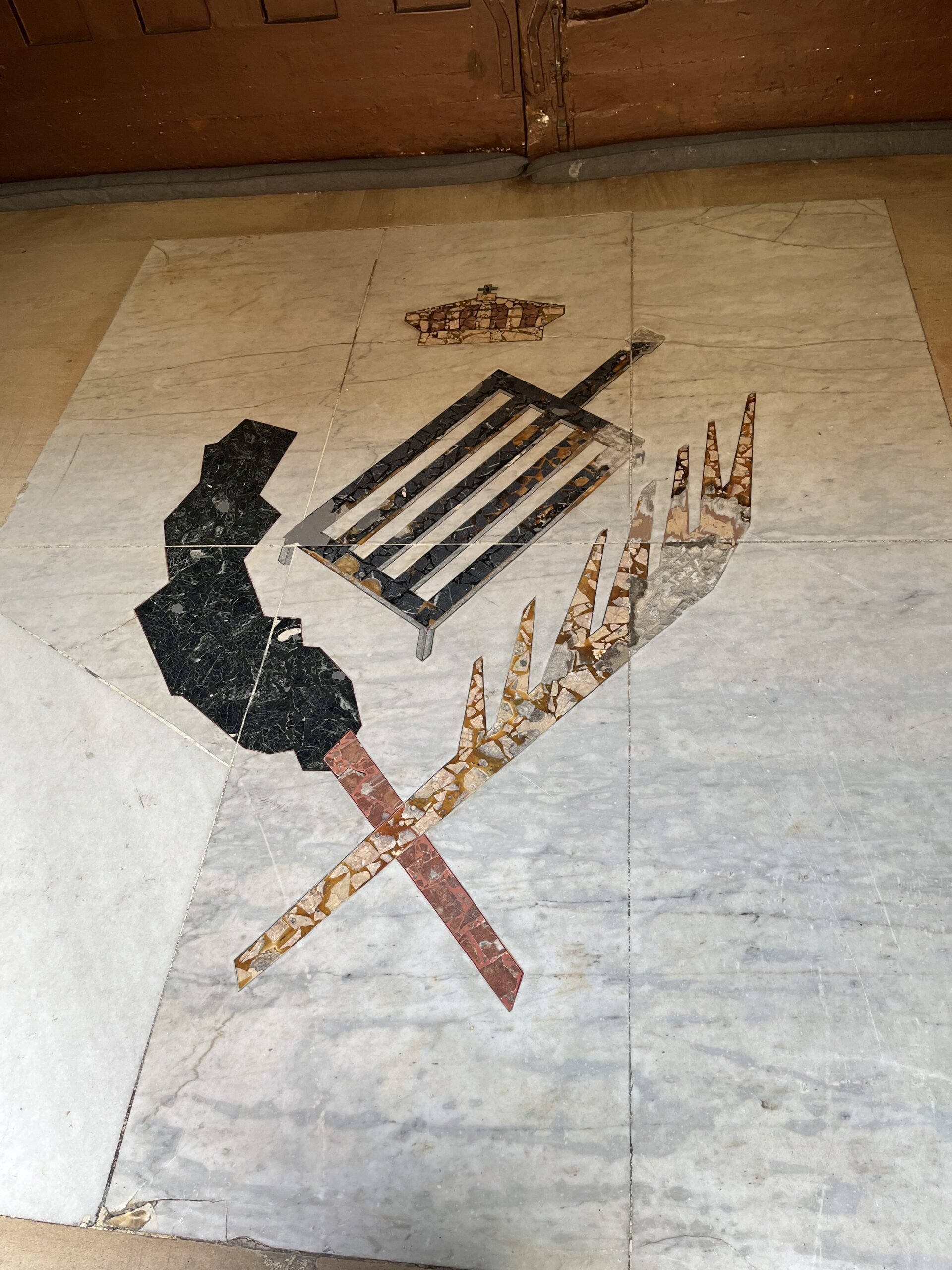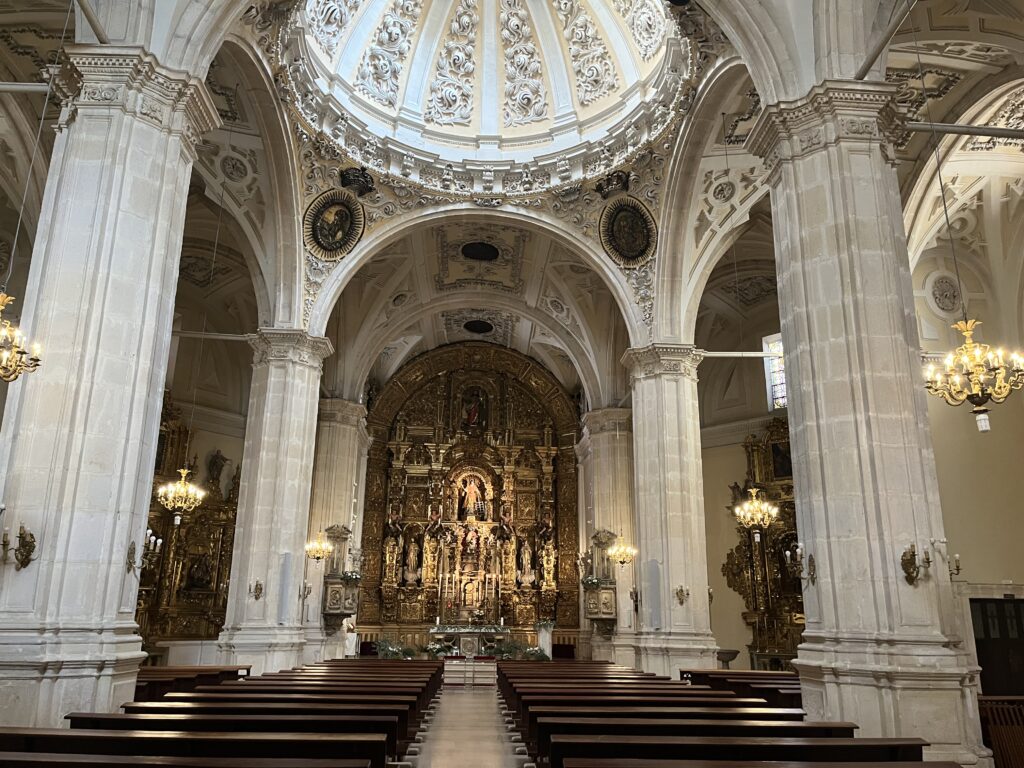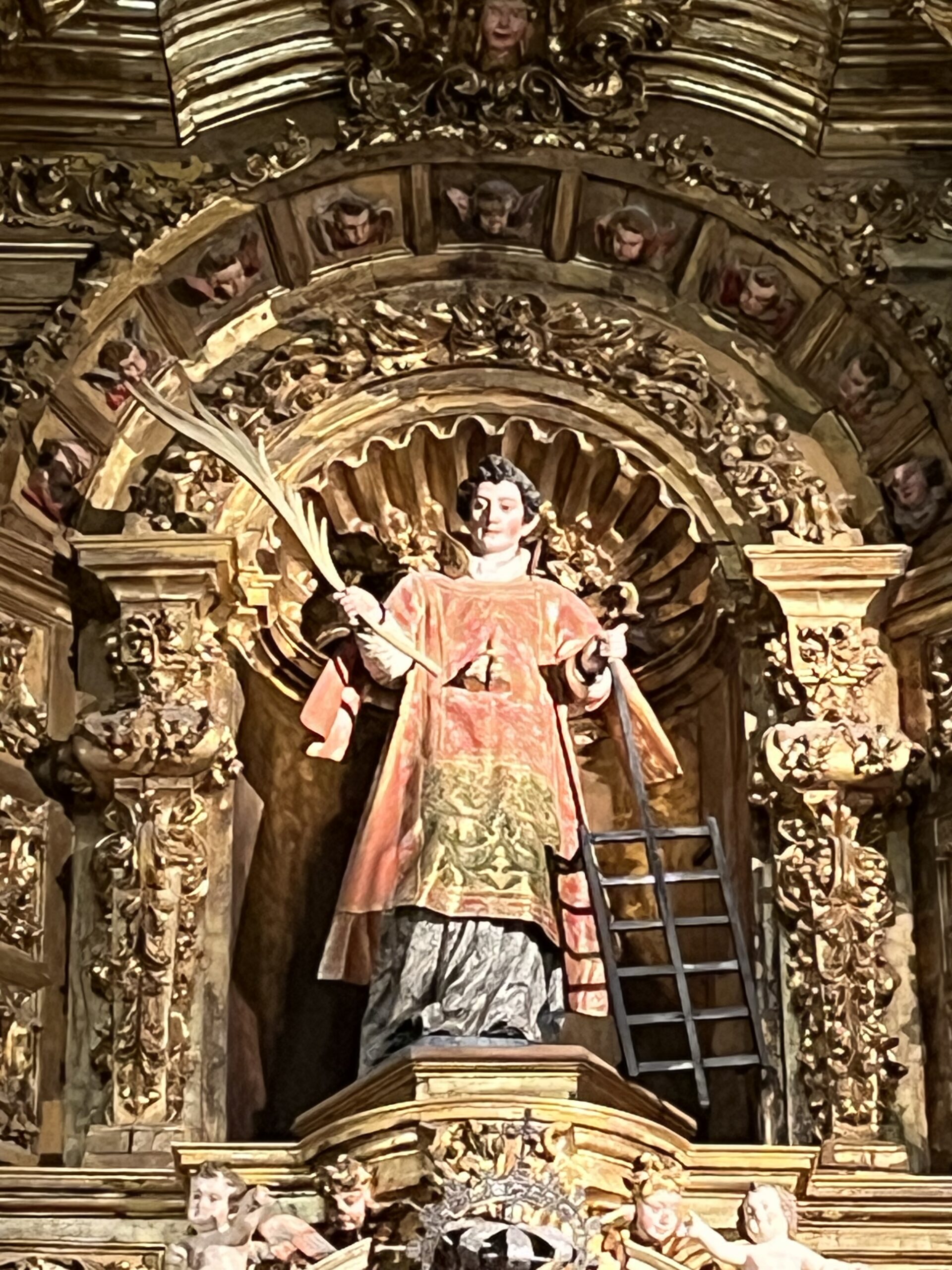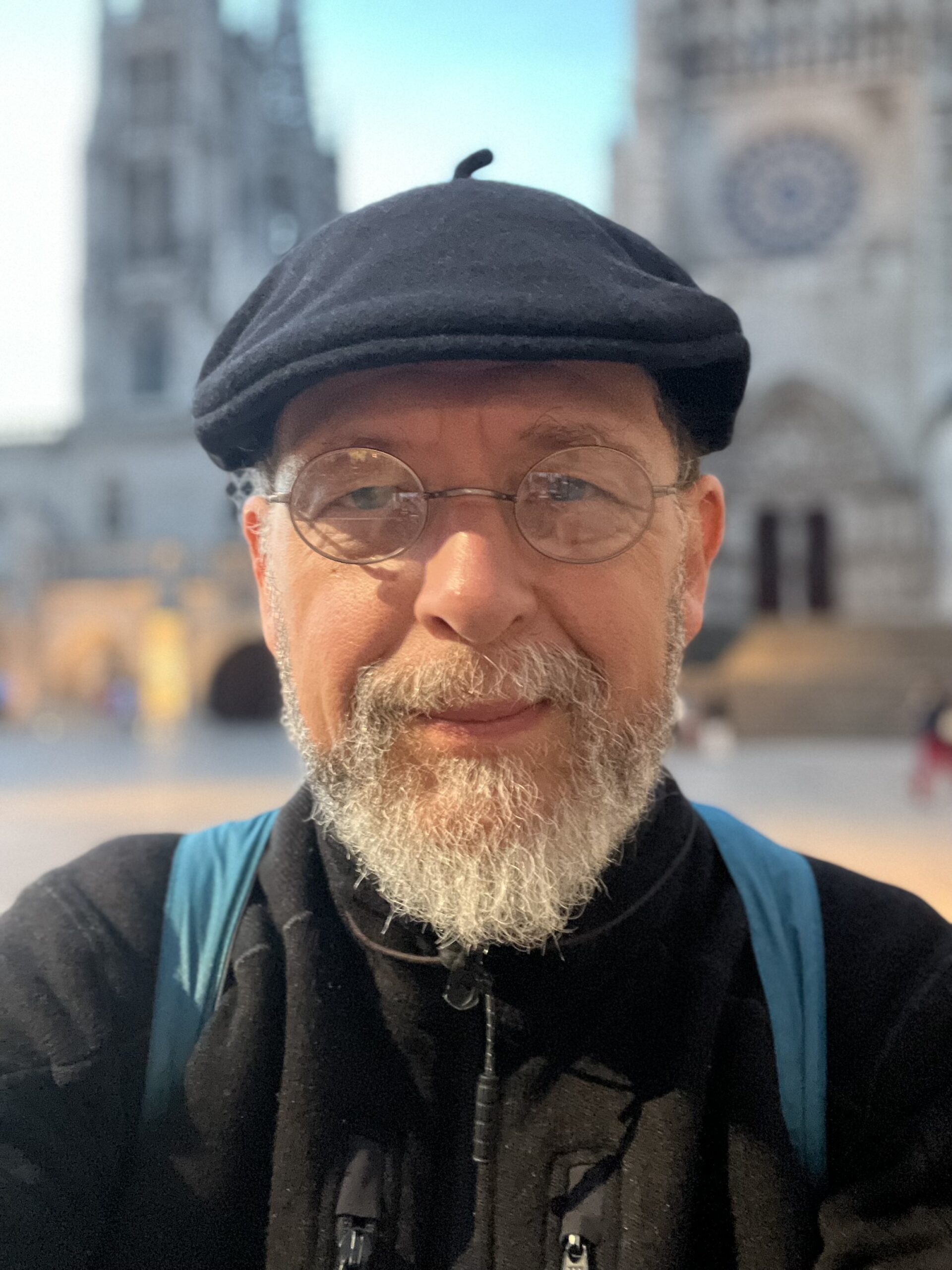Via Podiensis: In Burgos
Yesterday after arriving in the city, I spent an unconscionable amount of time running errands. I have a room here for two nights, which allows me to completely empty and rearrange my backpack. Somewhere, tucked deep in a pocket, I found a tiny folded up map of some unknown town in France.
The errands included replacing some missing or lost items. I also added some compeed to my first aid kit, since I now have my first (tiny) blister of the walk. Finally, I hand washed basically all of my clothes except what I was wearing.
This morning, I outrageously slept in. I apparently needed the rest.
At about 9 AM, I crossed the river and entered the medieval city through the great Arch of Santa Maria, one of the most important gates in the city throughout the Middle Ages. The current façade dates to 1536. Once through the gate, I was in the Plaza Mayor, dominated by the Cathedral of Santa Maria de Burgos.
It would be a good half hour until the Cathedral opened, so I spent some time just walking around taking photos and videos of the place.
Most of the cathedral is given over to public visits and tourism, except on certain solemnities of the year. Two of the chapels, however, are used in daily worship. One of them, as large as any parish church, is where the public recitation of the Office and daily Masses are celebrated. The other is a chapel of reservation for the Blessed Sacrament, where Confessions are also heard. The entrance to these two chapels is from the Plaza de Santa María, which is the smaller of the two plazas surrounding the cathedral.
I prayed Lauds in the Blessed Sacrament Chapel for the intentions of the Camino, completely unaware that the canons of the cathedral were celebrating public Lauds in the other chapel. That’s what I get for not reading the schedule closely.
To get to the other parts of the cathedral, you actually have to leave the building and walk around to the much larger Plaza Mayor to buy a ticket and then go in an entrance on that side of the cathedral.
The cathedral is probably the largest religious building I’ve ever been in in my life, with the exception of Saint Peter’s in Rome. There are numerous chapels, some of which are almost the size of your average parish church, and some of which are quite tiny.
The structure was built over the course of more than half a millennium, and the interior architectural styles range from Romanesque through the most flamboyant Gothic to Baroque and even Neoclassical. I don’t have any idea how this works, but somehow it does.
While there is no consistency of style, there is remarkable consistency of color and texture. The same sort of stone was used throughout, and this helps achieve harmony.
Around every corner and in every nook and on nearly every surface there is a a sculpture, painting, stained glass, carved wood, that in most churches would be a major focal point. Here, they are scattered like so many flower petals.
And the level of detail is completely overwhelming. You could spend years in here and not see every piece of art.
While the majority of the side chapels are clearly no longer in use, several of them are, at least sometimes, as the altars have linens, candles, and crucifixes on them. These particular chapels also have pews or chairs in them. That’s probably not a coincidence.
The nave and choir are smaller than you might expect, but sumptuously decorated and furnished. The high altar and retablos are carved of walnut and gilded.
According to a tour guide who wandered through while I was sitting here, Mass is celebrated here during Holy Week, Easter, Pentecost, Corpus Christi, and Christmas.
The nave also contains the tomb of Rodrigo Díaz de Vivar (c. 1043 – 1099), otherwise known as El Cid, as well as his wife, Doña Jimena Díaz (d. c. 1116).
In my tour of the side chapels, I came at last to the great Chapel of the Constables, an octagonal structure of flamboyant Gothic and Baroque. Despite its overexuberant decoration, there’s something about the space that has always moved me. Perhaps it is the lifelike sarcophagi of husband and wife in Italian marble and jasper, their faces serene and restful, but not idealized with their jowls and double chins. Perhaps it is the unfinished tomb of their grandson, just an empty block of red Italian marble next to them, the cost still chiseled in and visible. Perhaps it’s just the proportions of the space. Whatever the reason, this is probably my favorite part of the entire cathedral.
I note that one of my favorite paintings from the cathedral museum has now been moved here, the 15th century “Virgen con Niño en un Paisaje”.
The cathedral walk-through concludes in the main sacristy, with its three altars and countless drawers and tables. Here it is possible to see what the carved walnut Baroque altars look like when they are not gilded.
It is in the upper cloister, however, where the Gothic and Mudéjar fabric of the cathedral is best preserved.
The museum is smaller than I remember, possibly because they have moved some of the art back into its proper places in the cathedral. It is housed entirely within the old Chapel of Santiago, which in itself is larger than some of the churches I have seen in Spain and France. There’s an additional exhibit on the history of the Cathedral and the city contained within the lower cloister.
I finished my tour of the cathedral at about 12:30 PM, having spent three hours and 98% of my phone’s battery life in the building. At this point, I had to run back to my room to get an external battery to charge my phone.
I took a lot of photos, and some video as well. The video certainly chews through the battery.
So far, I’ve commented an awful lot on the physical aspects of the cathedral. I’d like to take just a moment to talk about the spiritual aspects.
Certainly the fact that much of the building is essentially a museum most of the time affects the feel of the place. But even so, there is, I think, a distinct spirituality that permeates the place. Sometimes it’s more apparent in the overall feel rather than in any specific piece of art or architecture.
The Cathedral is overwhelmingly Christological. This is His house. You can see it, and you can feel it in the very bones of the place. His image and His mysteries pervade the entire fabric, sometimes in grandiose pieces of art, but also in half-hidden little details everywhere. Hopefully some of that comes across in the photos.
I have no photo of perhaps the most amazing image, however. This is the life-size and realistic crucifix hanging in the chapel of reservation. It’s an absolutely arresting image, but photographs are not permitted in this chapel. It makes you feel His pain and His anguish that He suffered for the salvation of the world.
In addition, as you might expect, this is a profoundly Marian Church. Her image and her spirit pervades the place. No matter where you go, you can find an image of the Blessed Mother, and unlike some places I’ve been, they almost uniformly have a kind look in the eyes, even if they are sometimes sorrowful.
You can feel her presence here.
And, of course, the cult of the saints is everywhere. There are probably hundreds of them depicted in the cathedral. I feel this is something we have strayed from and need to get back to. The intercession of the saints is a powerful thing, indeed, and the sheer number and variety of them is a great comfort to those of us who don’t fit neatly into the normal sorts of boxes.
Sometimes during the Mass, I can feel the presence of the great legions of angels and the company of saints. It is always a great consolation when this happens. This cathedral is one of the few places where I can feel that presence even when no liturgy is being celebrated, perhaps not so actively but as sort of a quiet background hum.
After my time in the cathedral, I had some lunch. I spent a chunk of the afternoon testing out various interior configurations for my backpack. I know, super exciting, but after Burgos the Camino moves into an entirely new geographical area: the Meseta. The days will be long, and I need this thing to be as comfortable as possible.
I also spent some time exploring Burgos south of the river, which is where my room is. I saw any number of churches there, all of which were locked up tight.
Afterwards, I returned to the north side of the river, and again most of the churches were locked. One that wasn’t was the resplendent Baroque church of San Lorenzo, originally Jesuit and now a parish church. I don’t know if the Baroque is growing on me or I’m just finding particularly beautiful sacred places that happen to be Baroque.
This place moved me, particularly the statue of Saint Lawrence on the retablo of the high altar, vested as a deacon and holding a gridiron and the palm of martyrdom. The artist really captured something in the expression of his face. This is a man boldly going to meet his fate, but with the merest hint of a smirk. It humanized the saint, if you will, while not taking away any of his sanctity.
I’m not sure I can really capture the way the image, and through the image the Saint and the Lord, touched me in that moment. I sat here for a long while, and then I prayed for the intentions of the Camino, which includes my own continuing discernment.
I attended the evening Mass at the Cathedral, which concluded with the blessing of the pilgrims.
Date: 03 October 2023
Place: Burgos
Today’s Photos!
